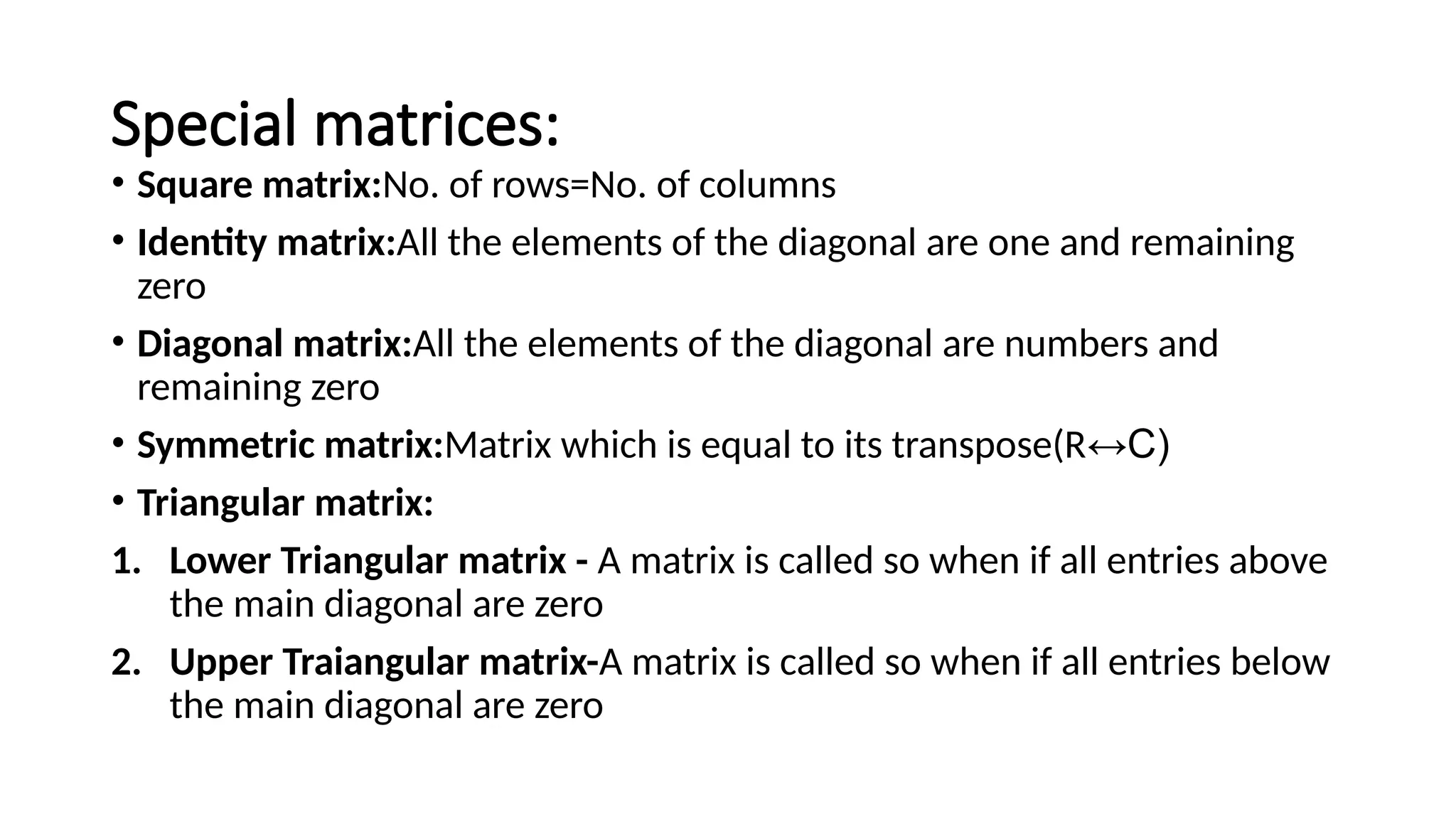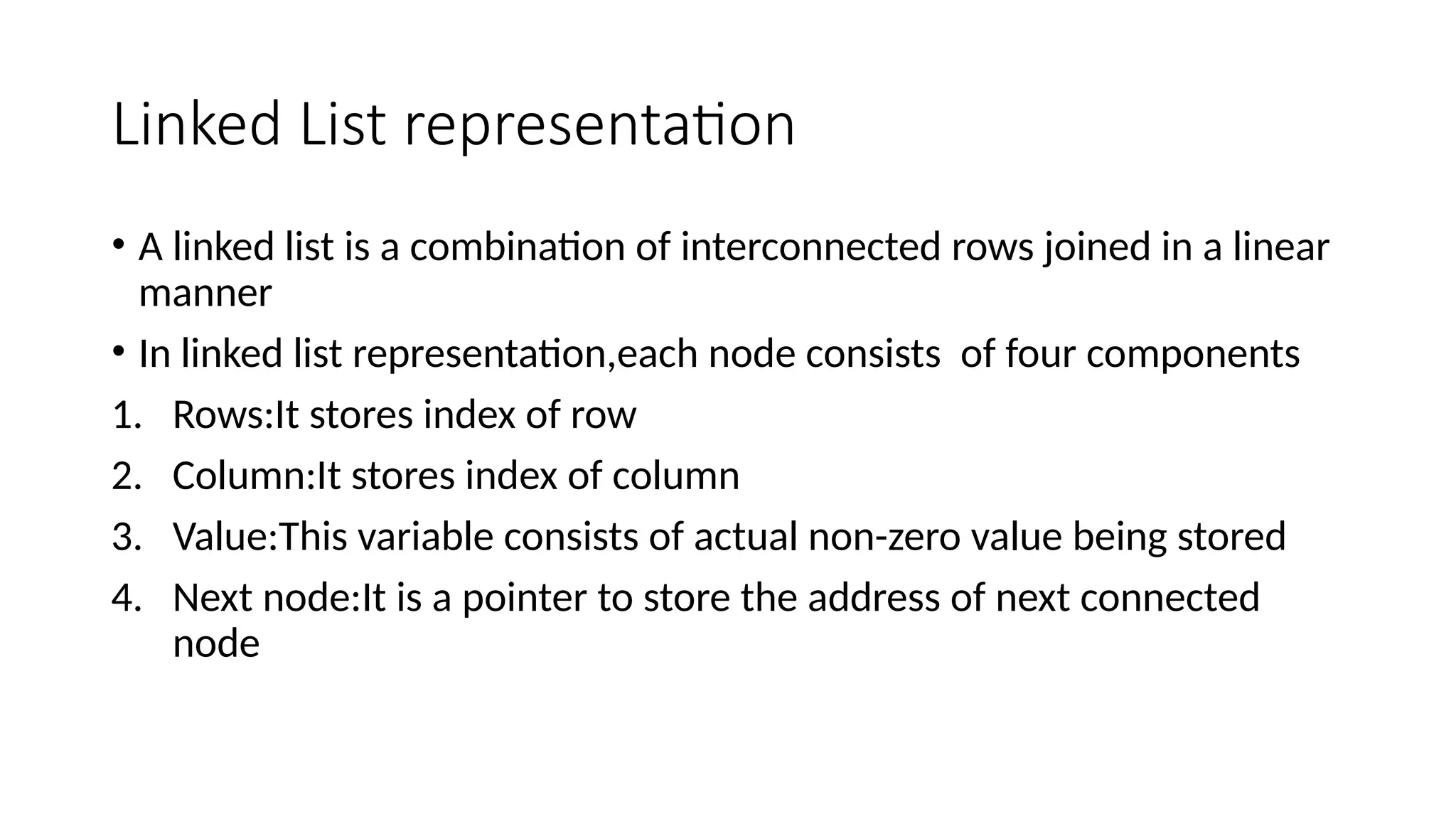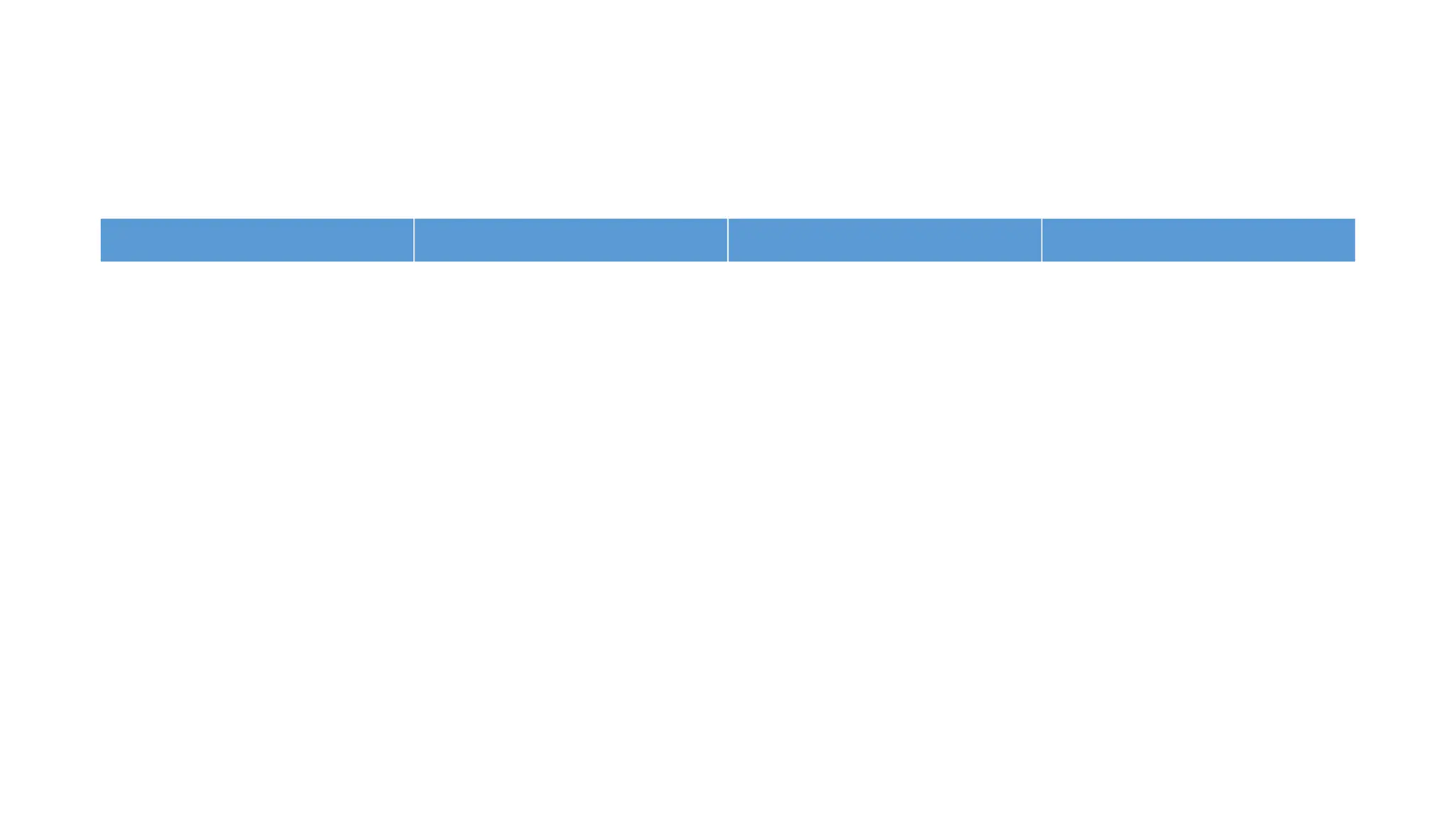The document provides an overview of data structures, defining them as methods for organizing and managing large amounts of data efficiently. It discusses various types of data structures, including primitive and non-primitive (linear and non-linear), highlights their characteristics, and illustrates their applications and importance in programming. Additionally, it covers abstract data types, their operations, and introduces classes in C++ for object-oriented programming.
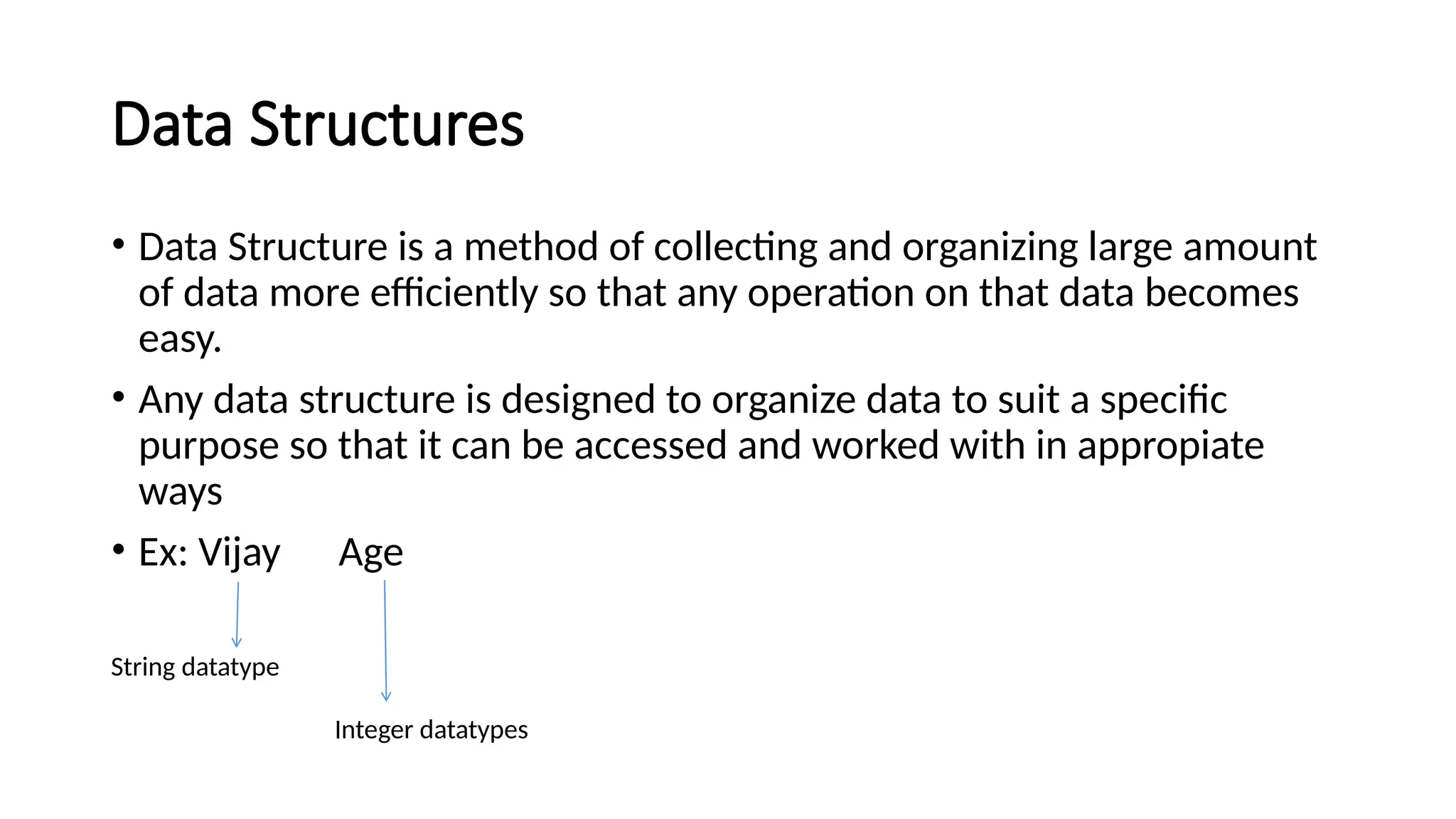
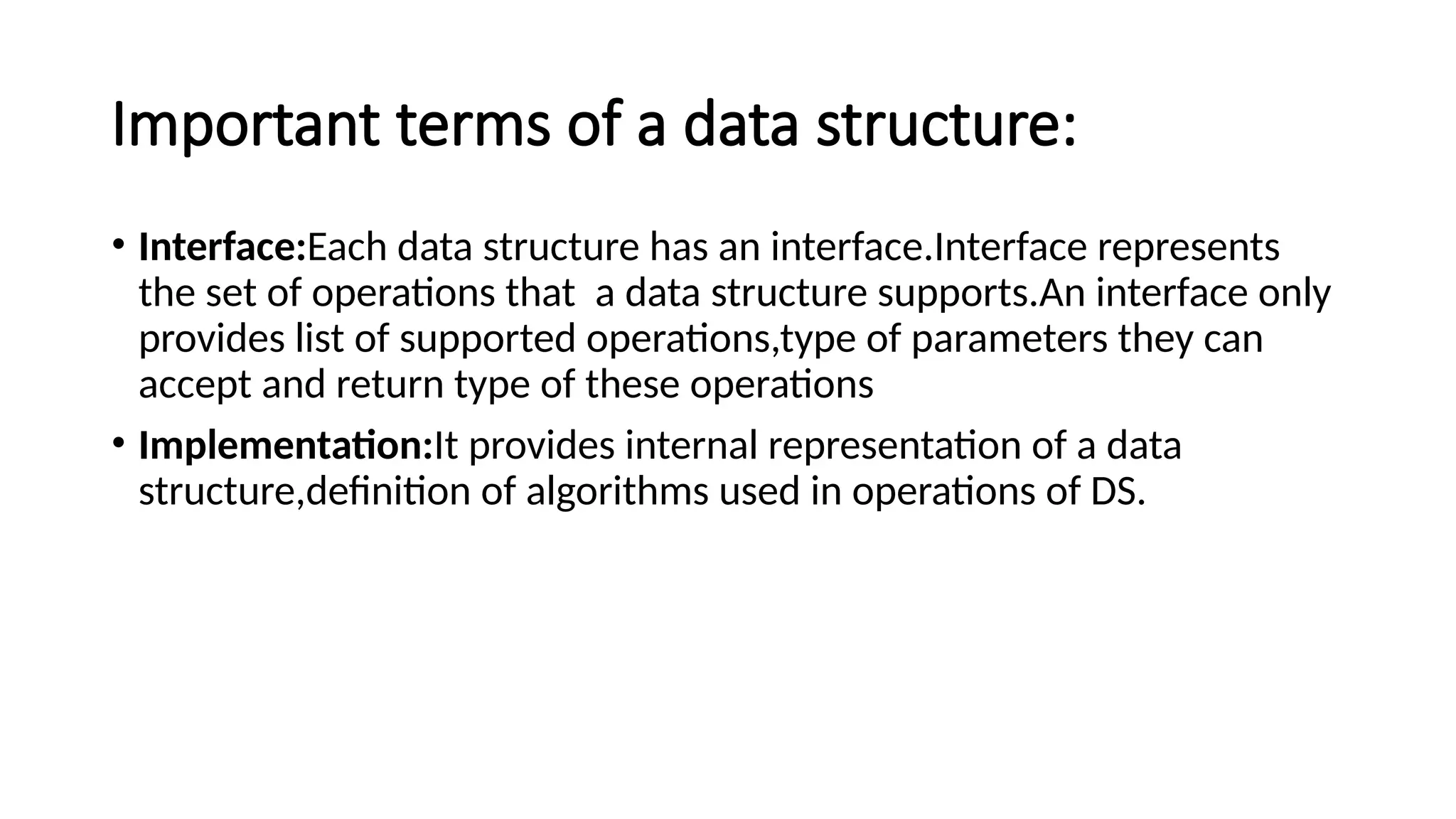
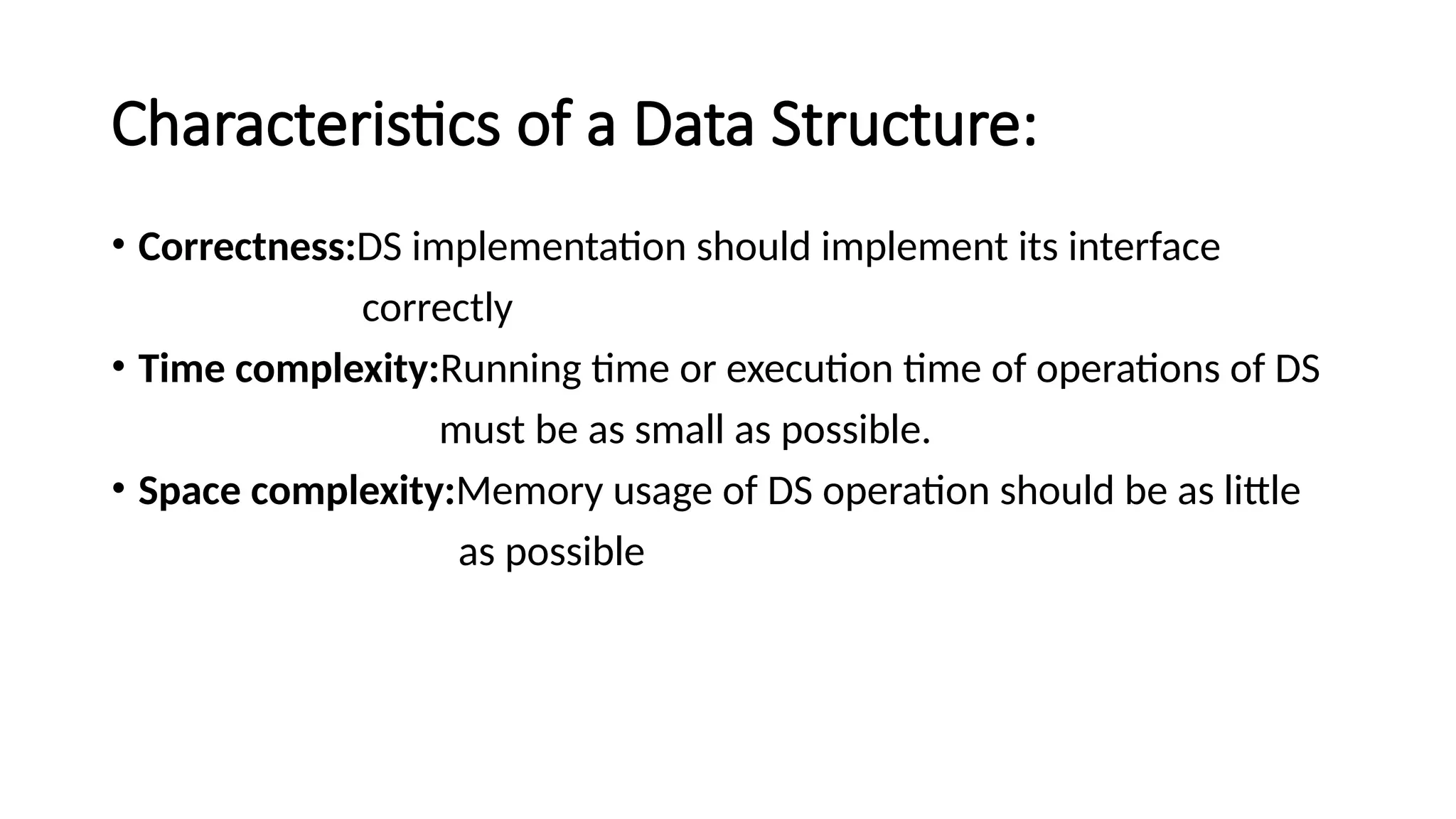
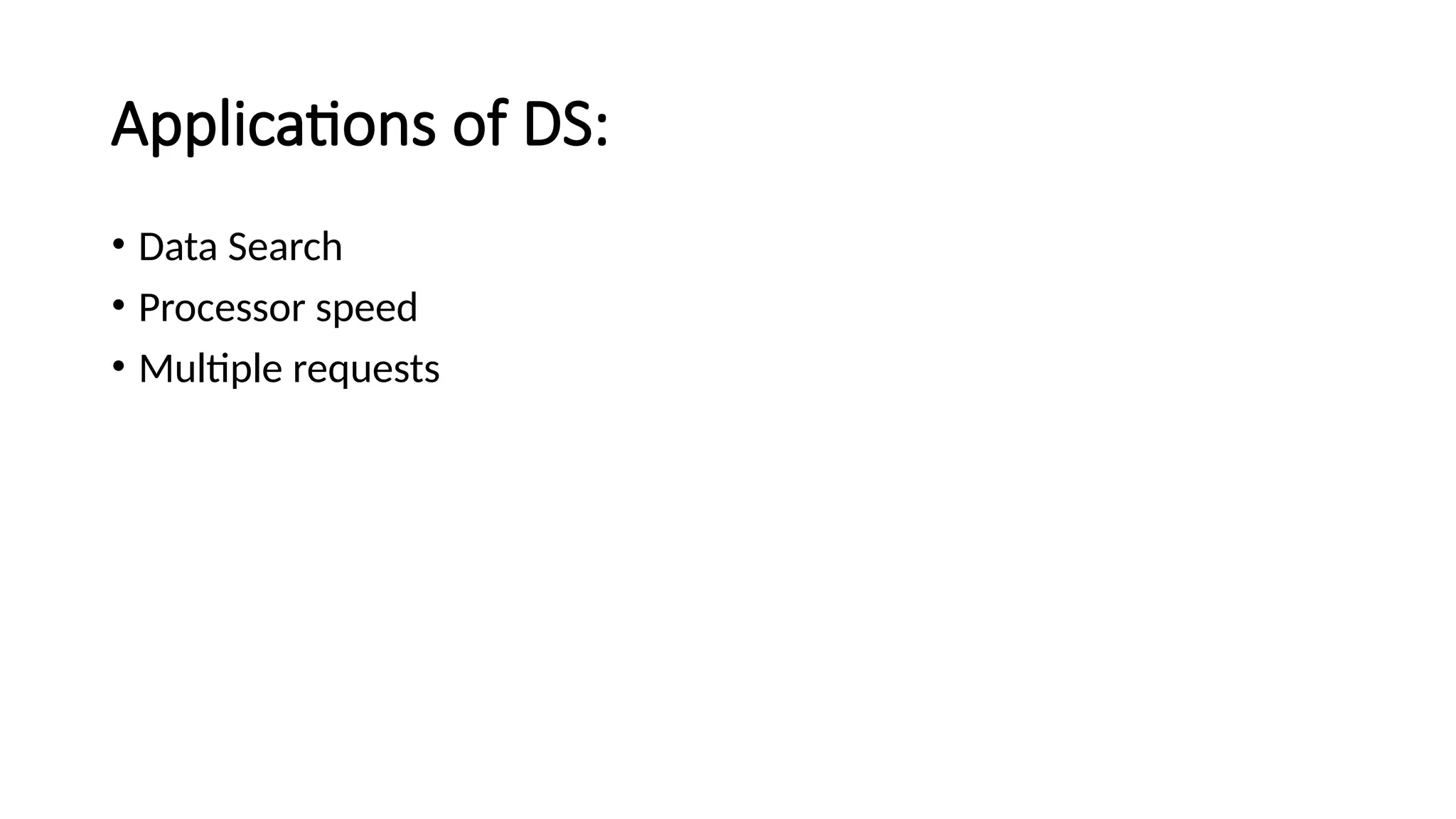
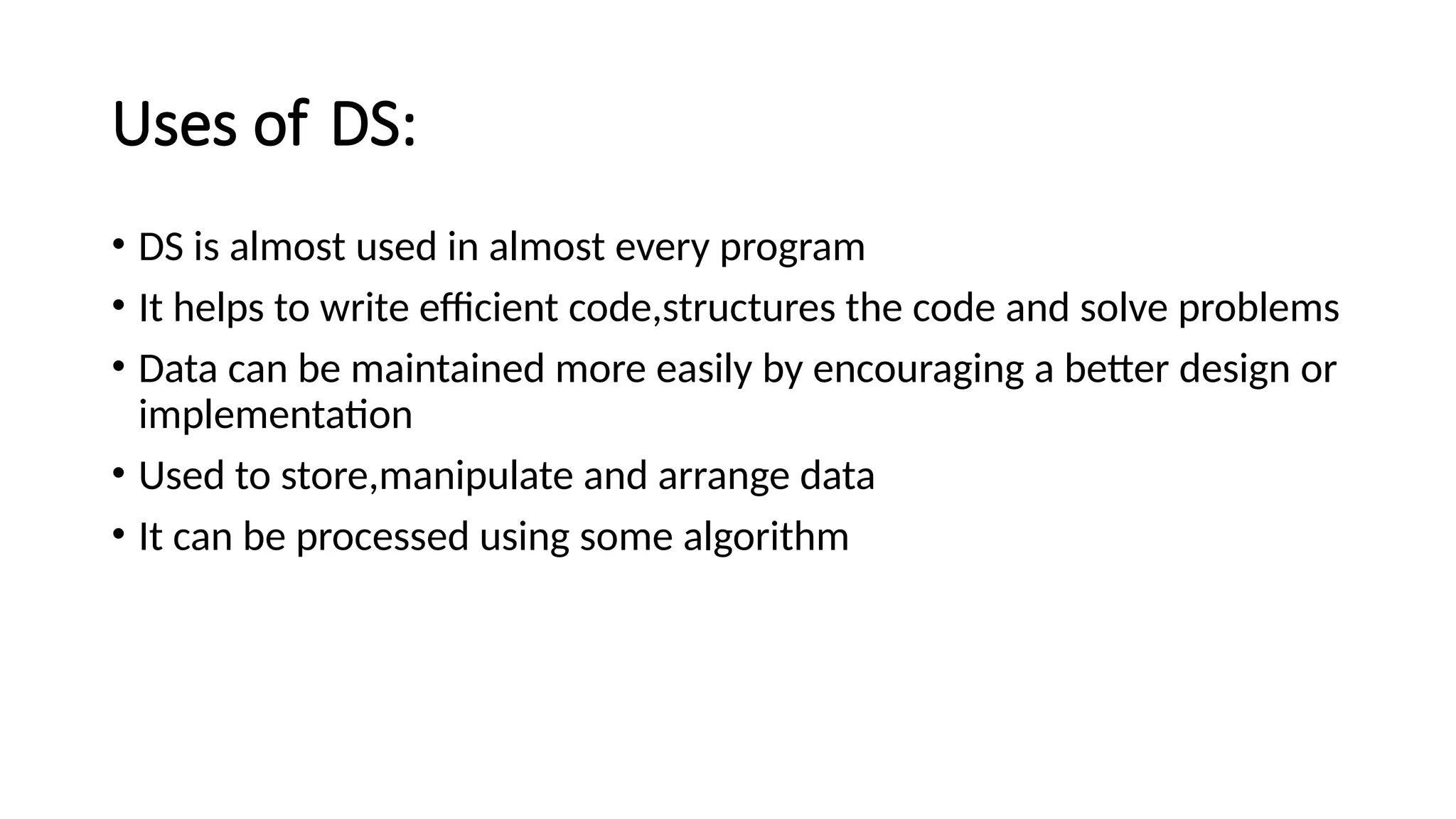
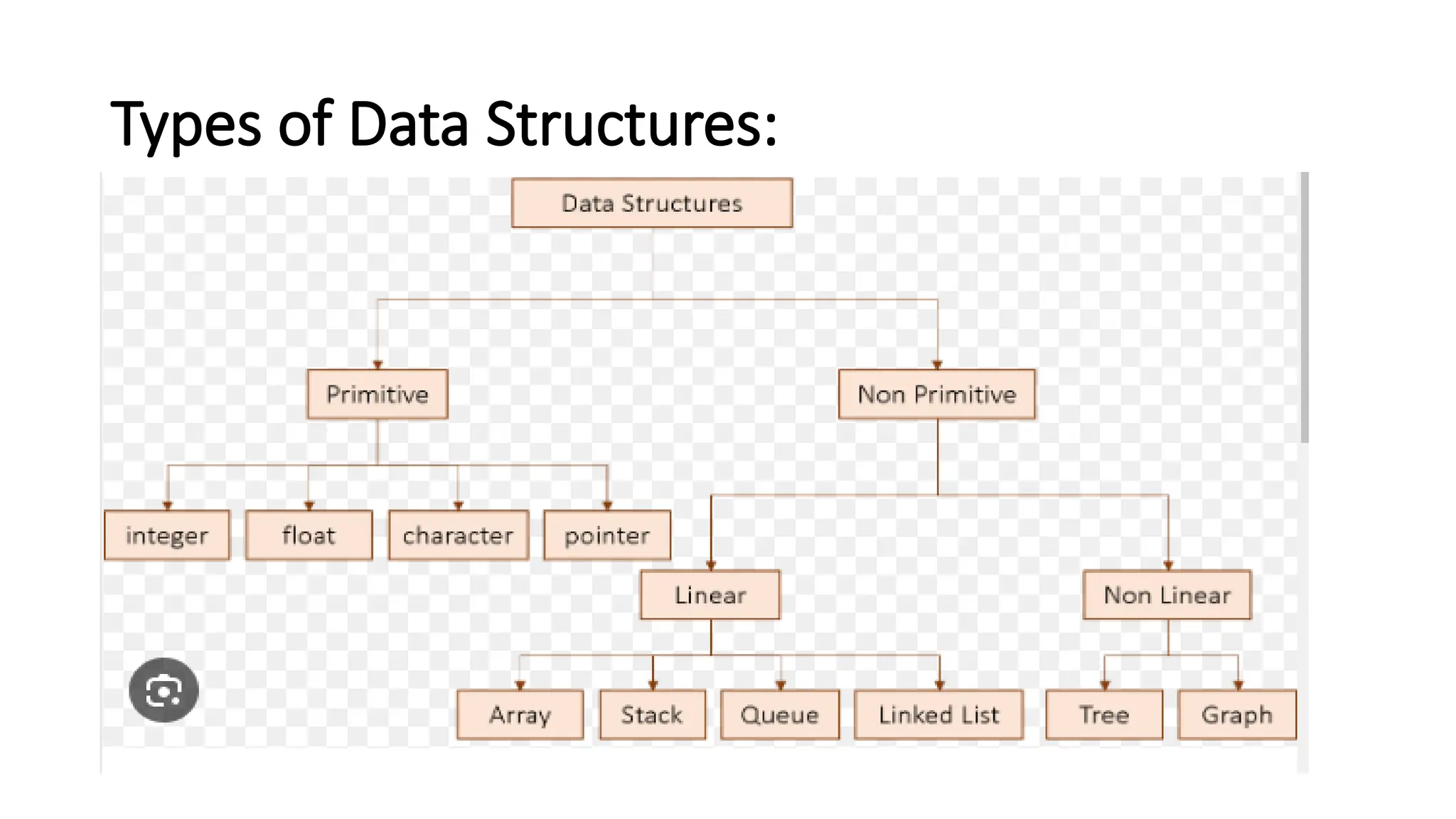
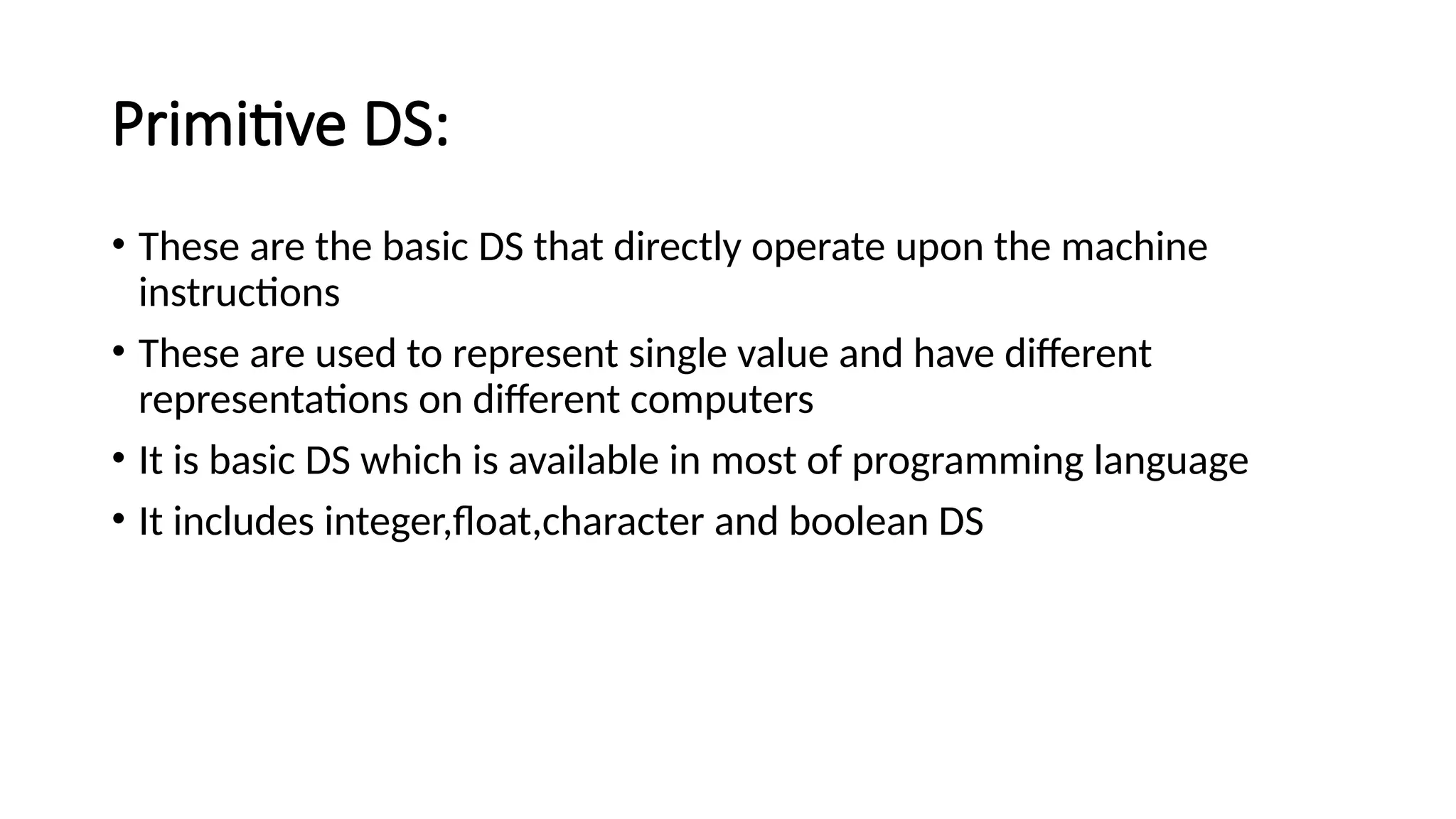
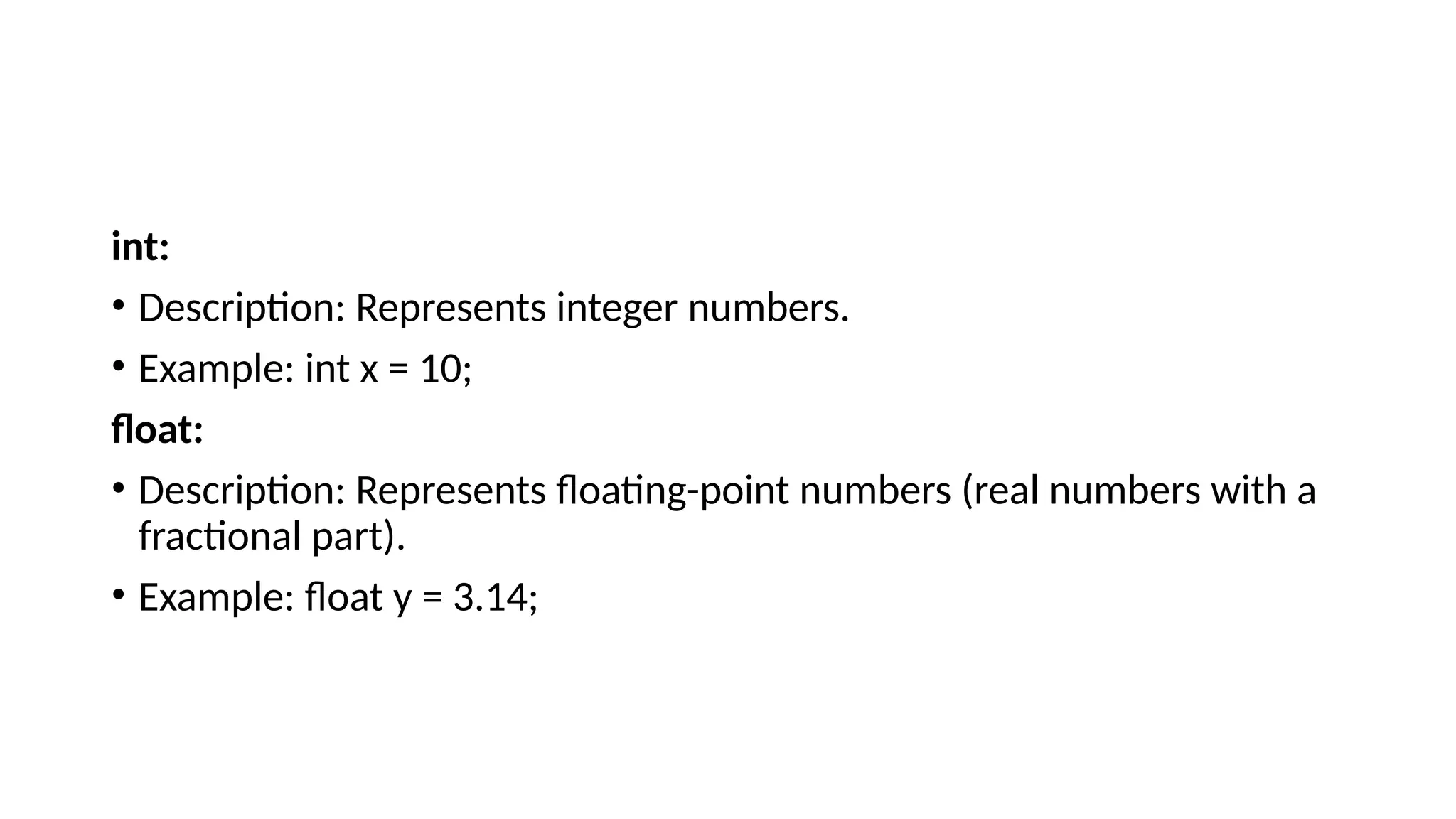
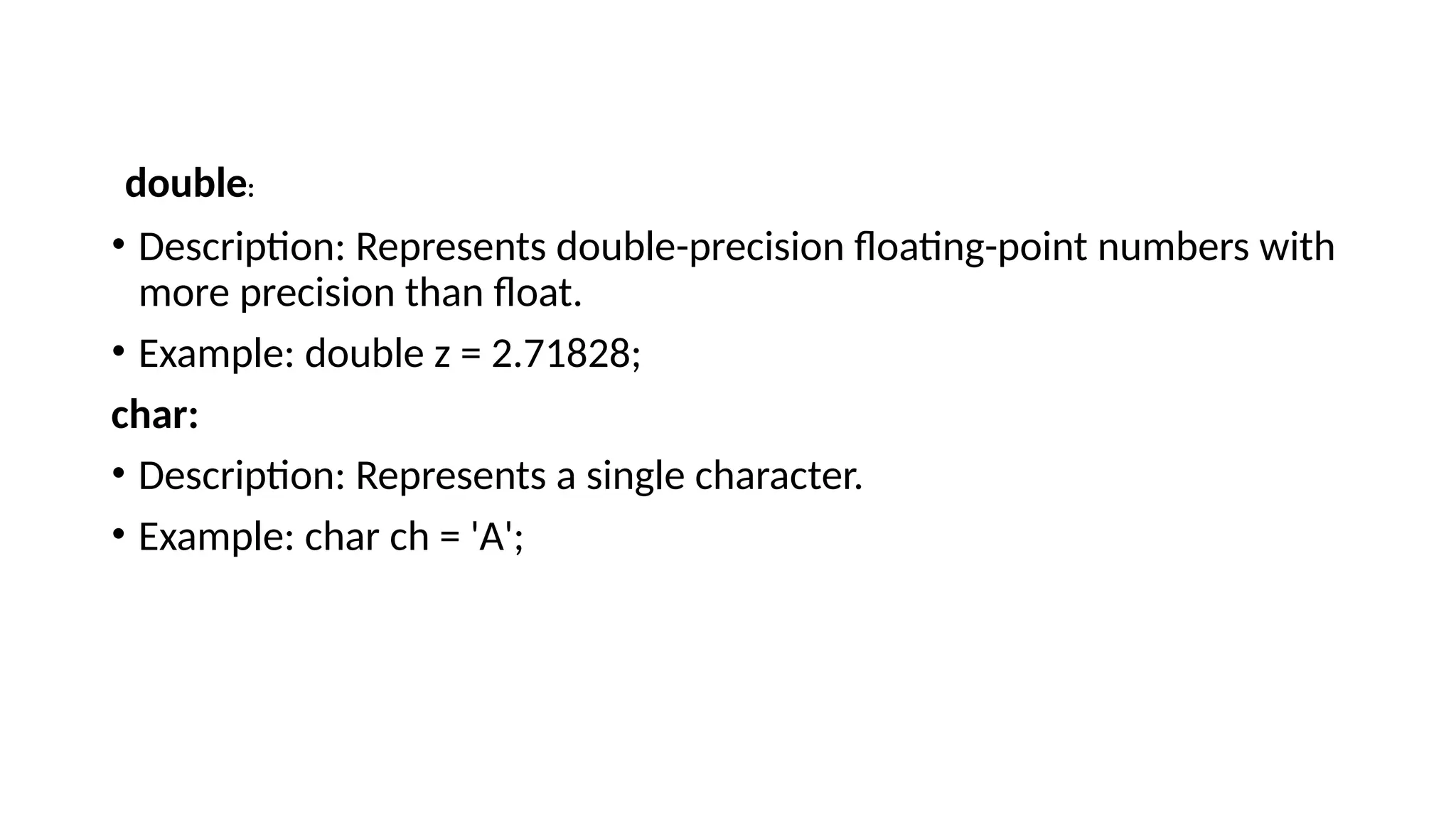
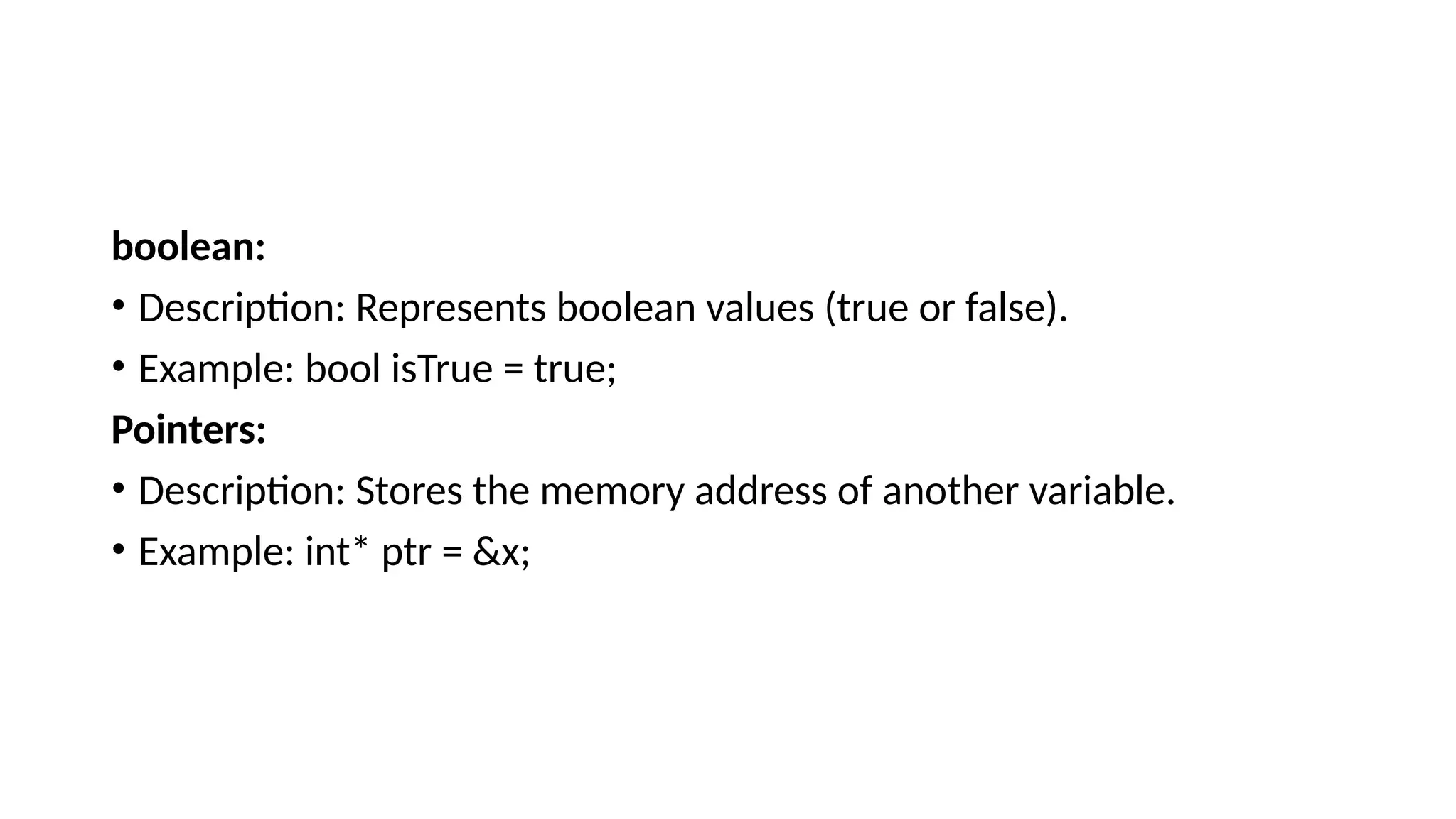
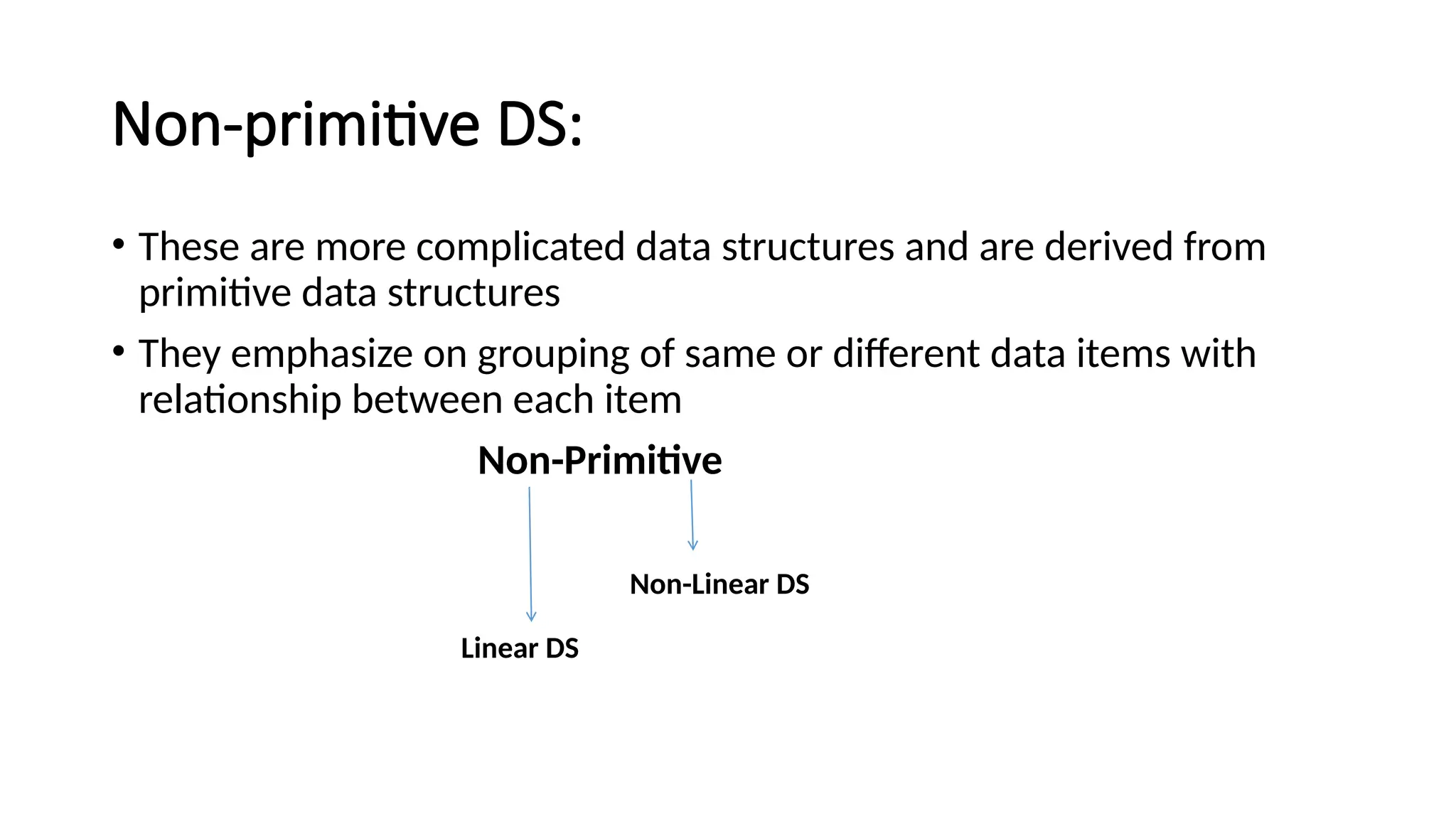
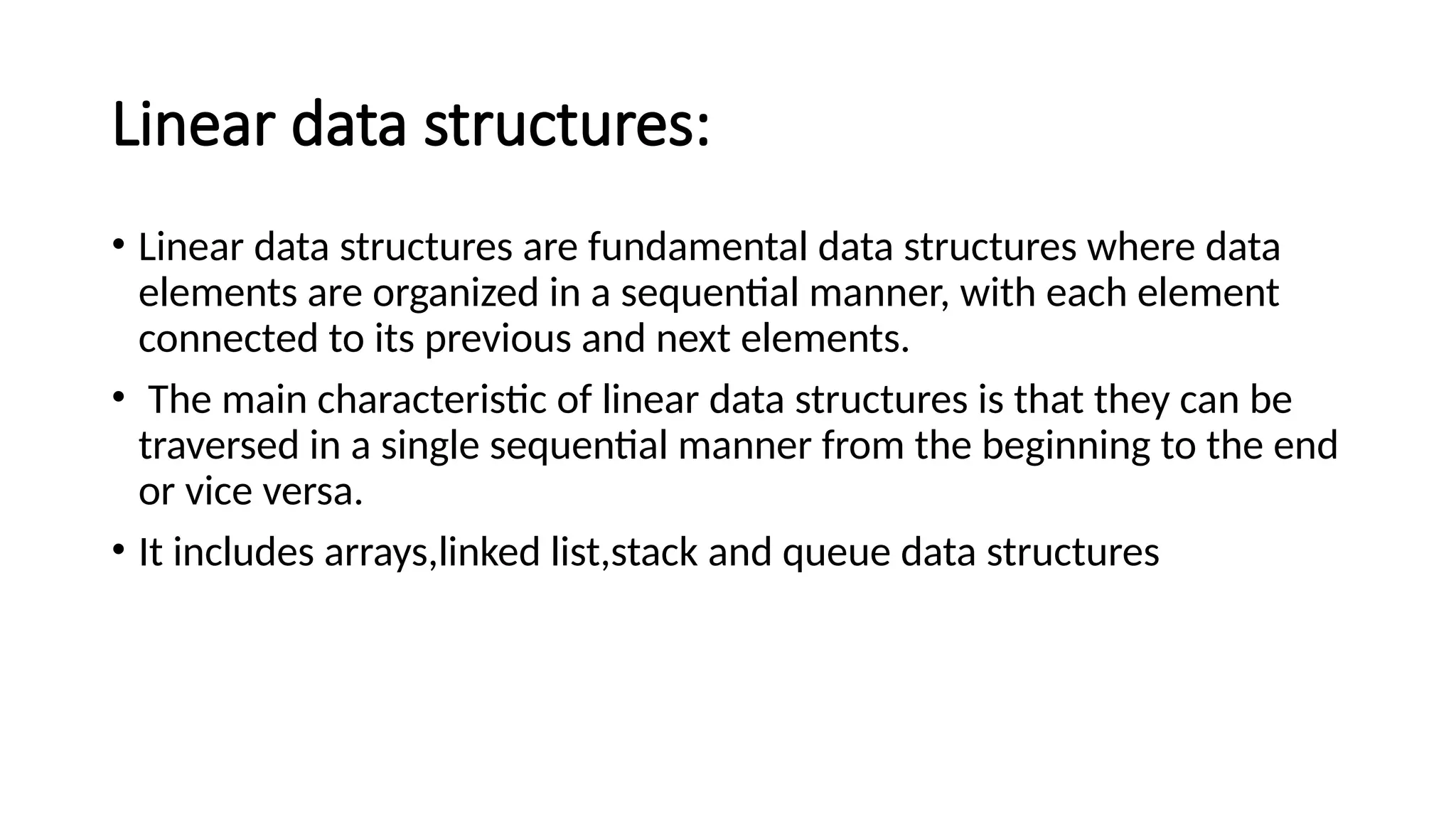
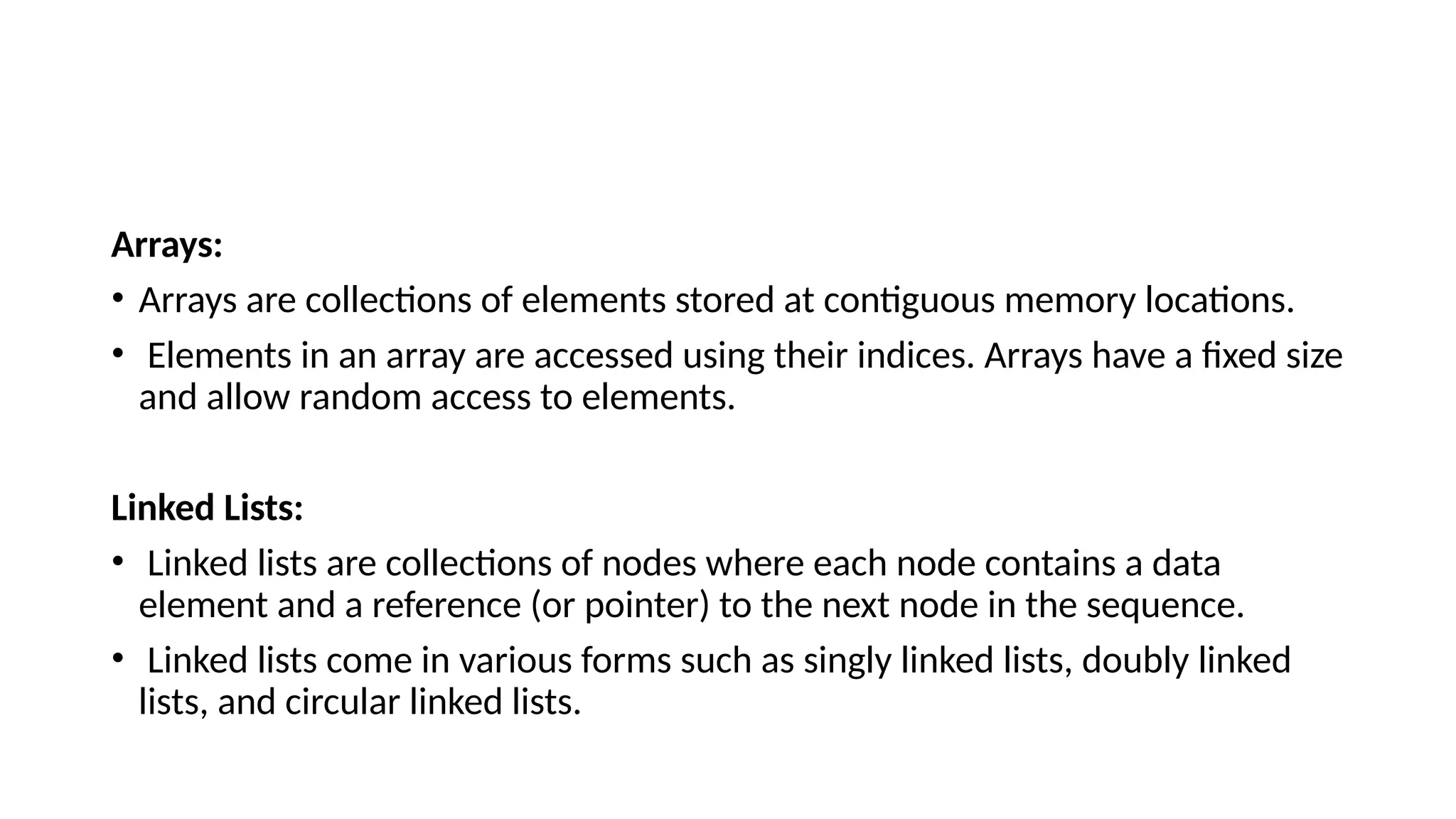
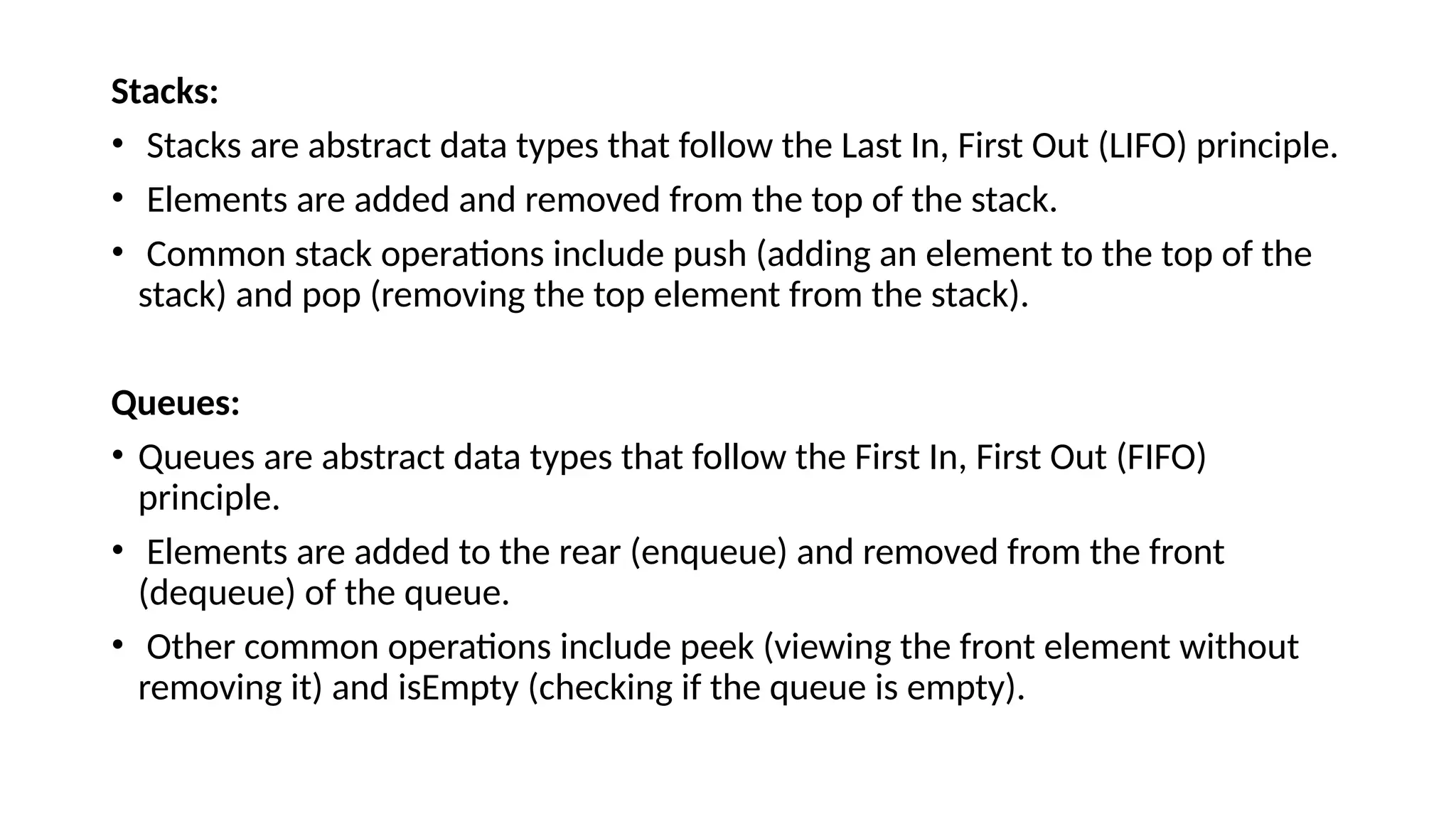
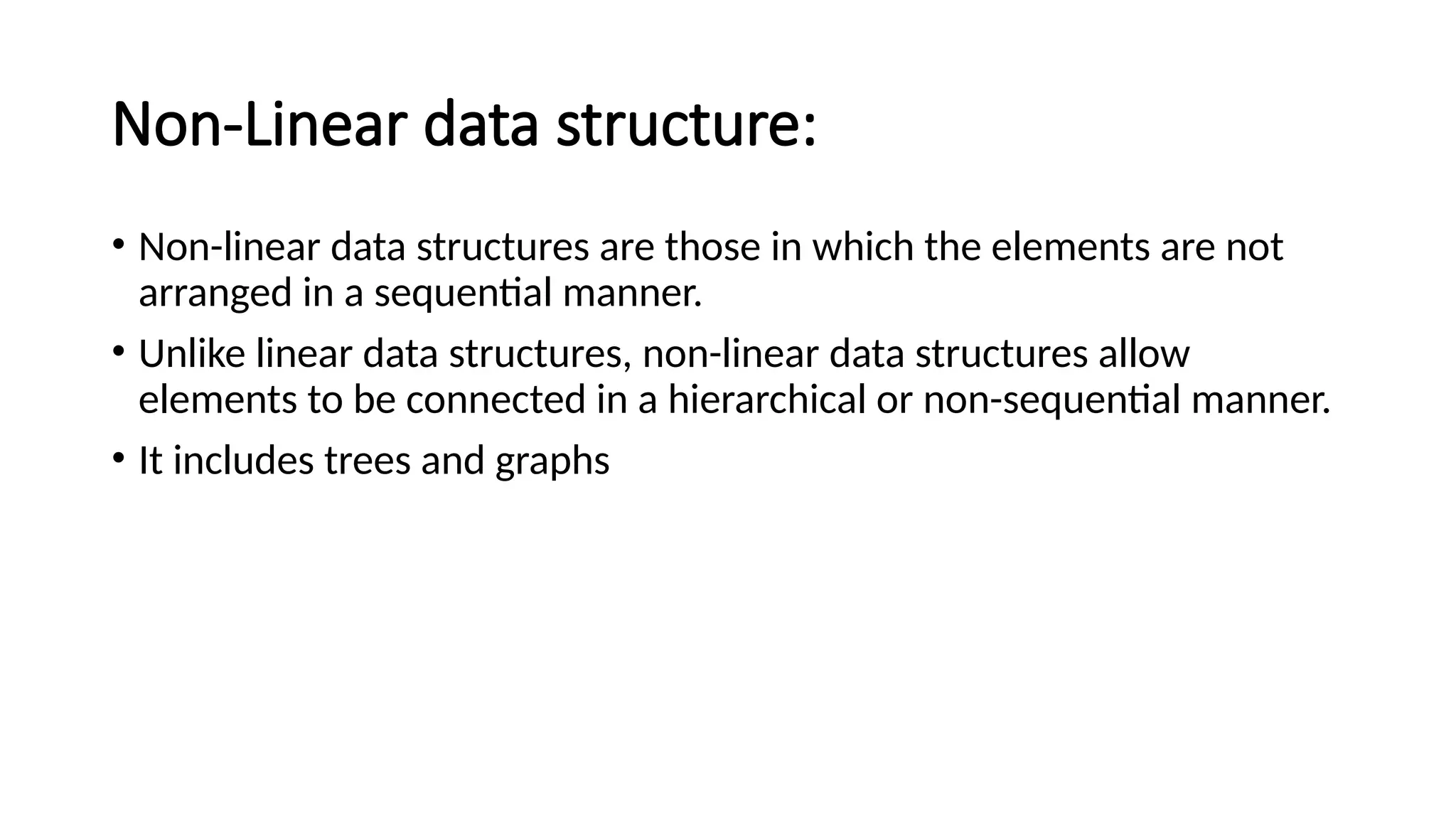
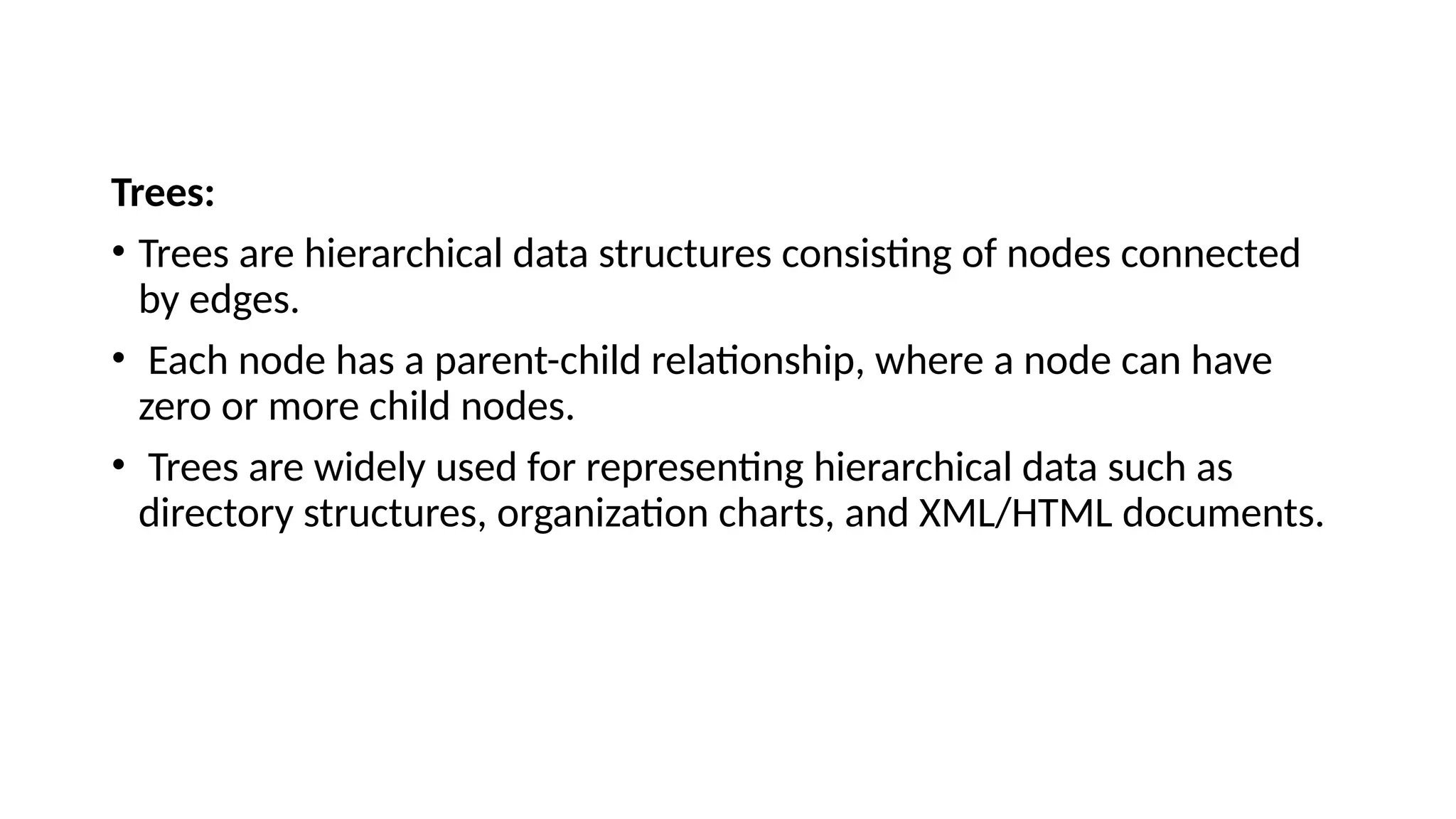
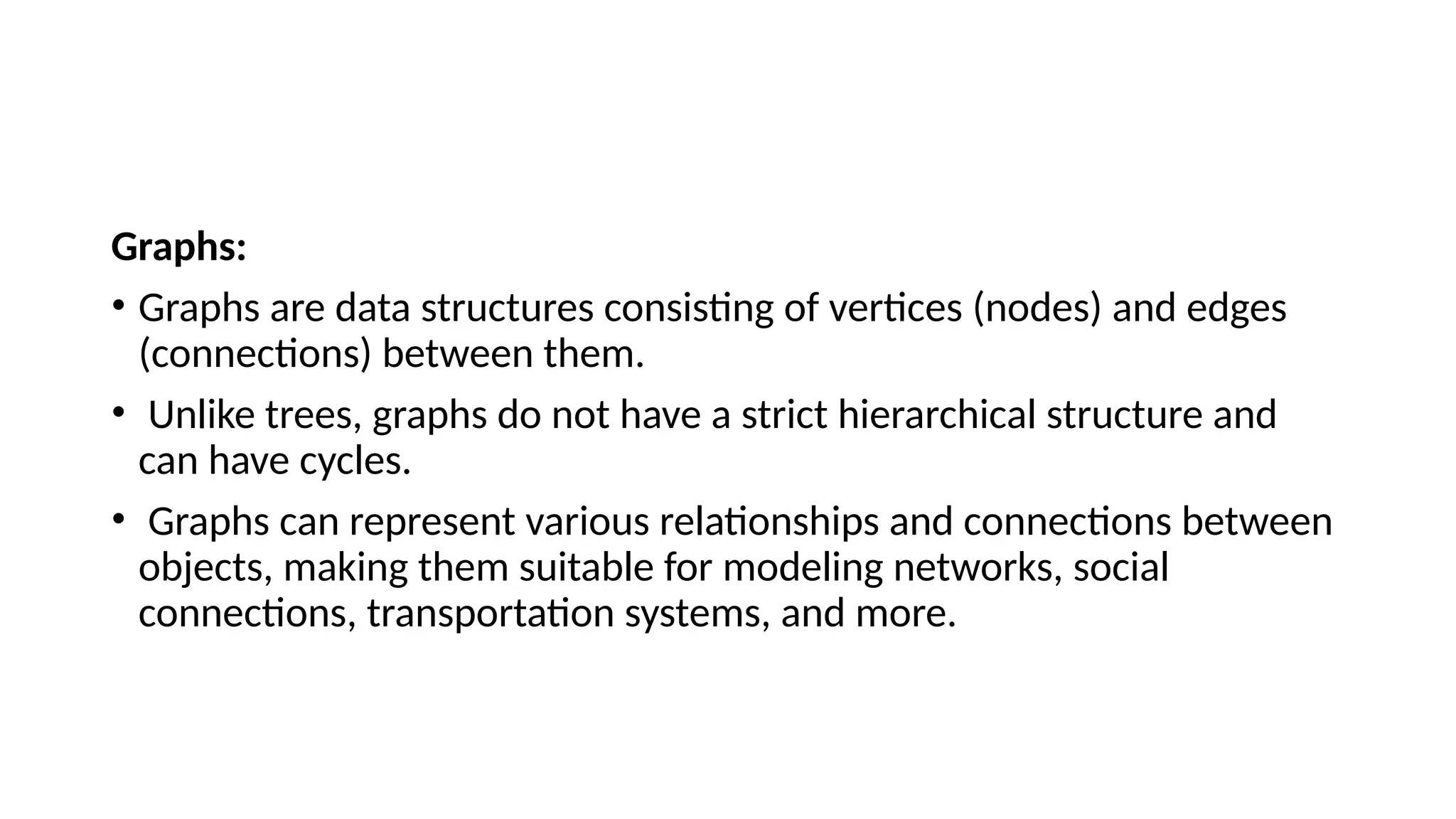
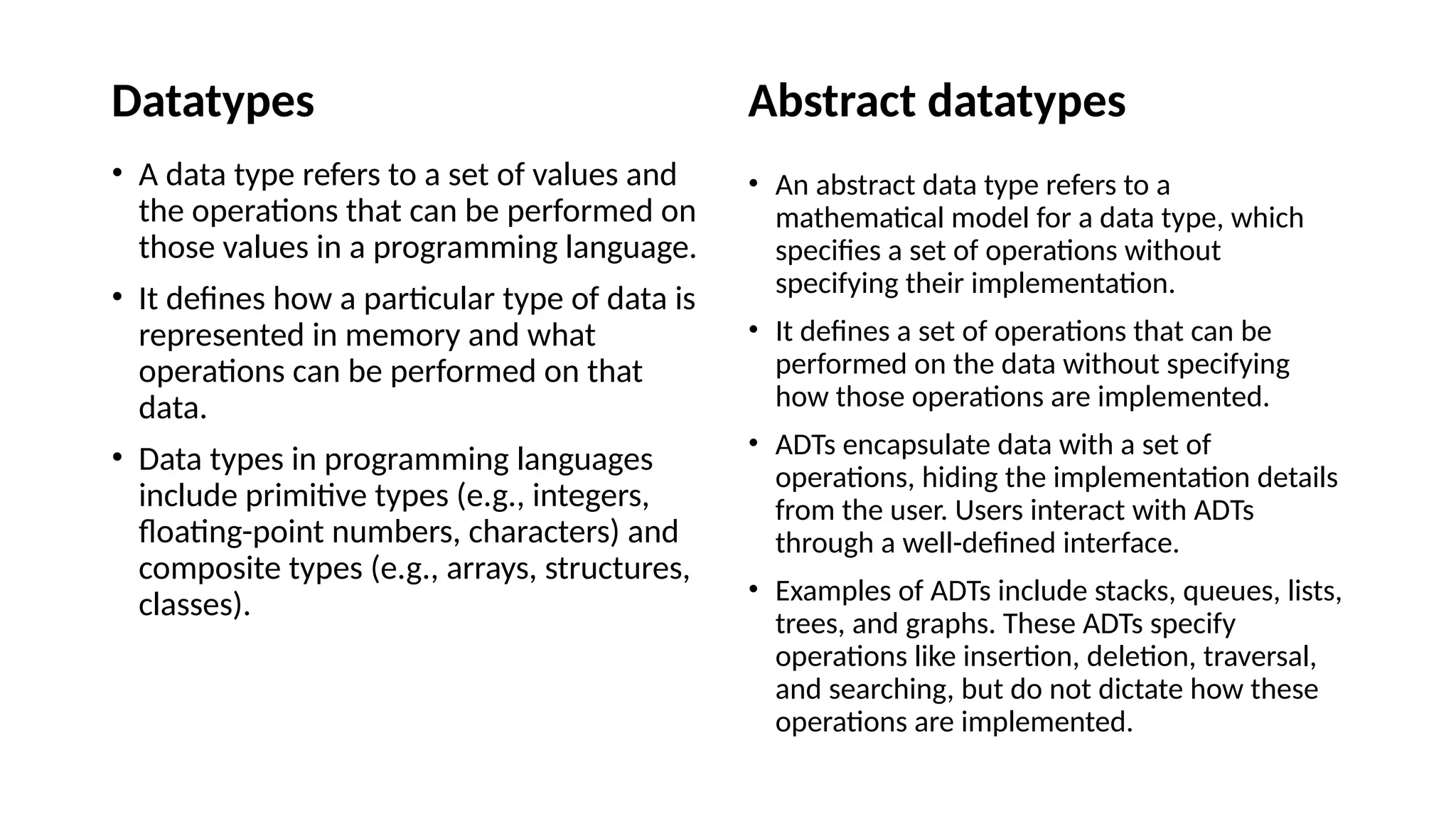
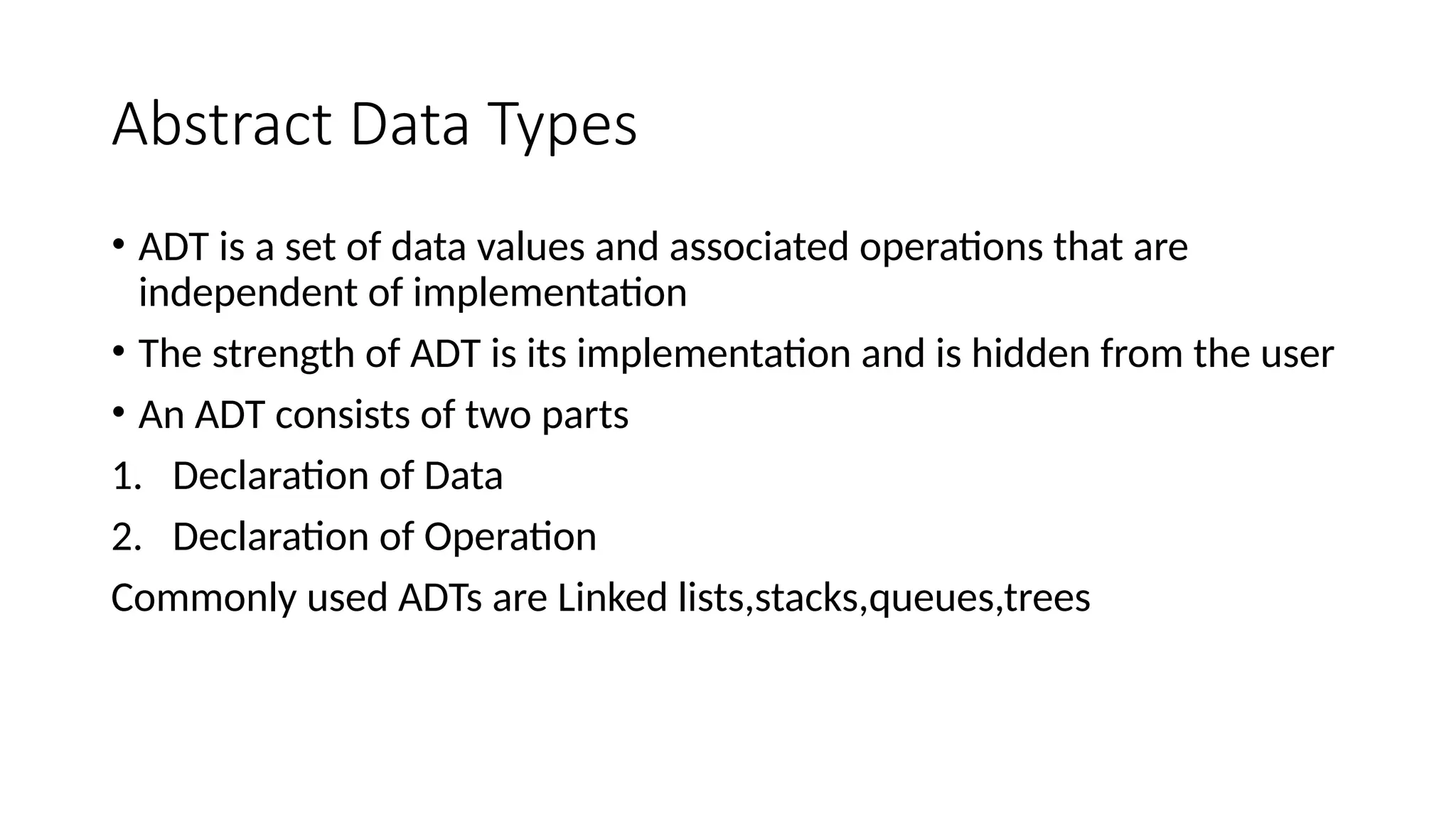
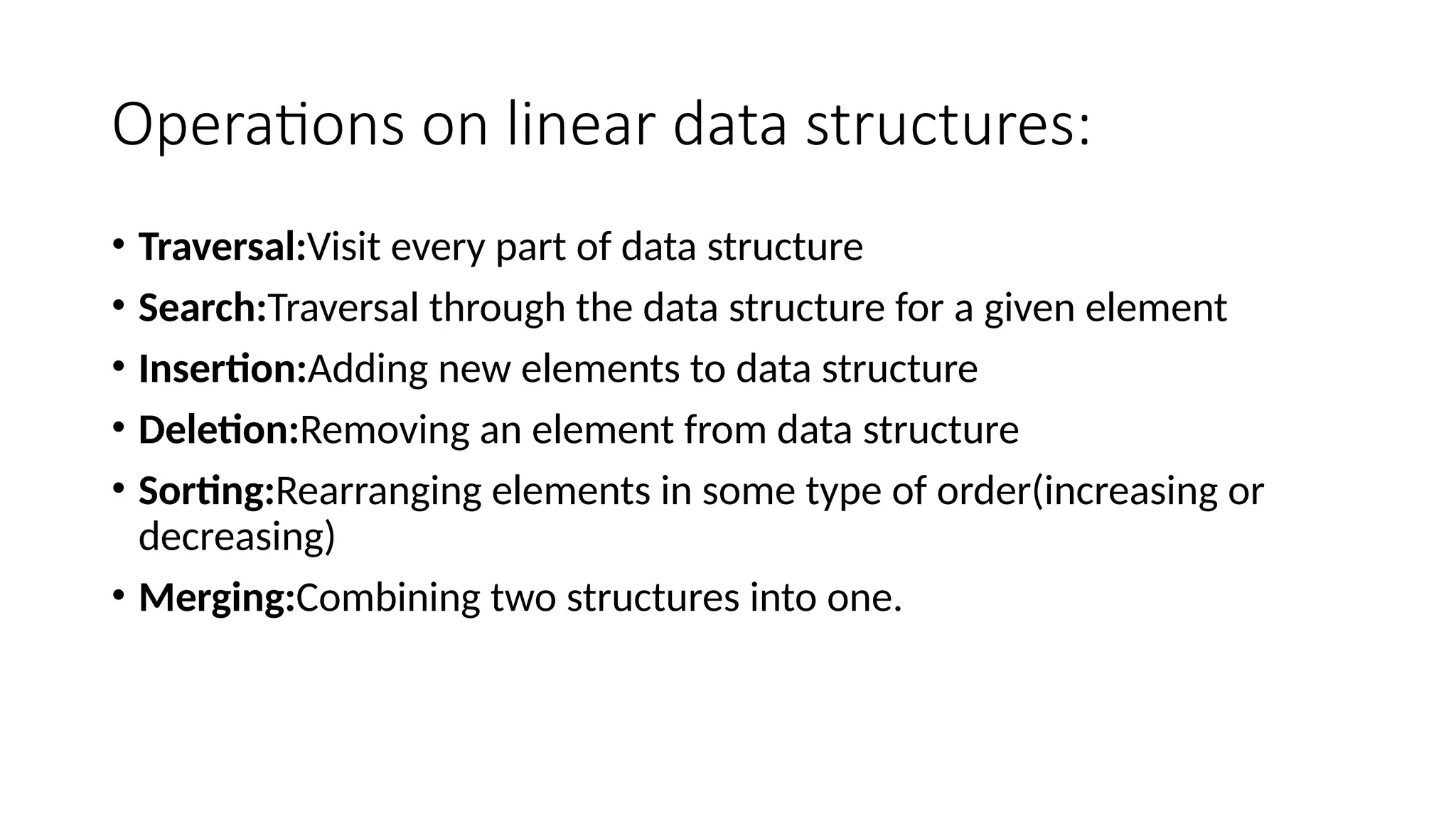
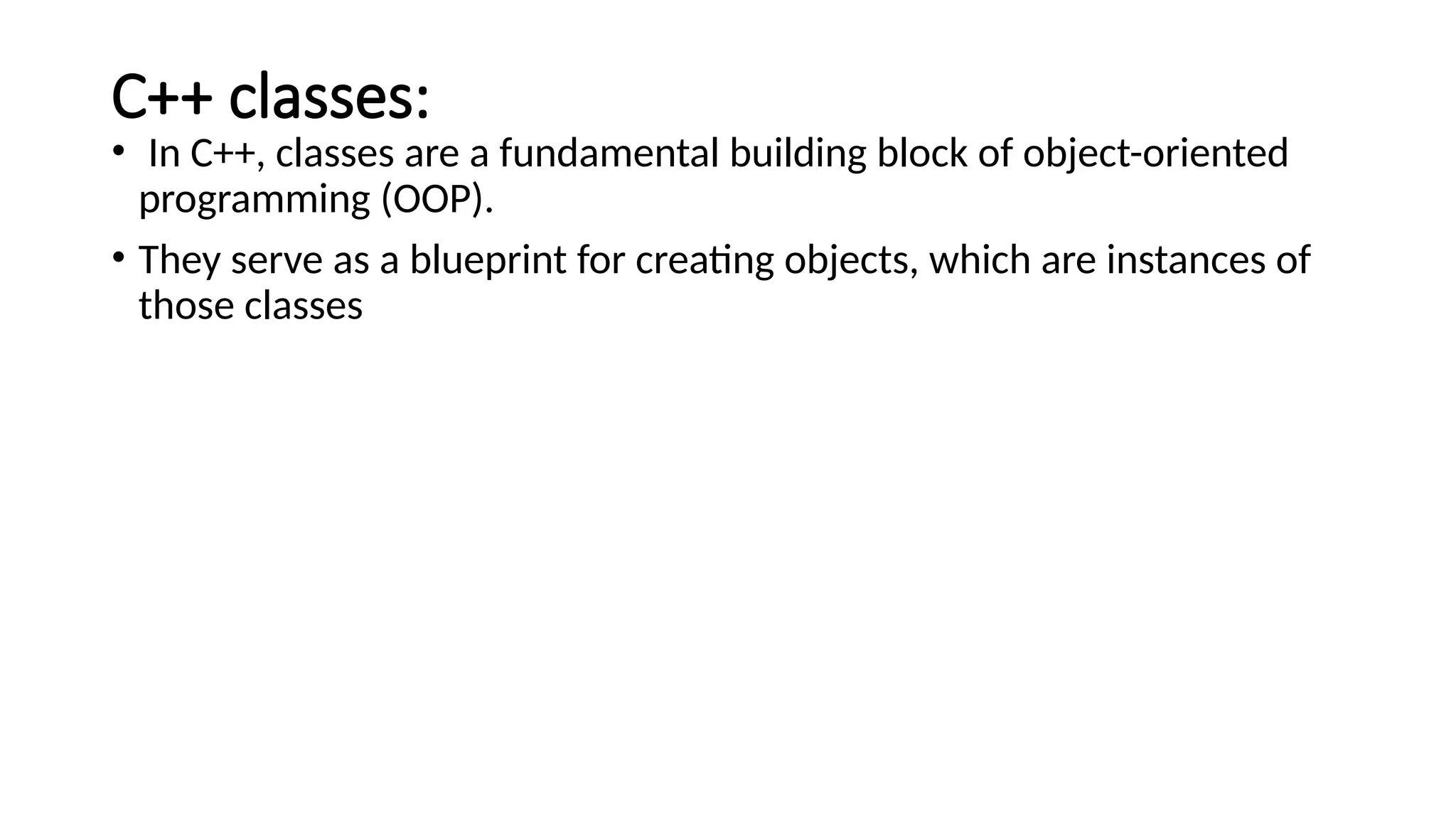
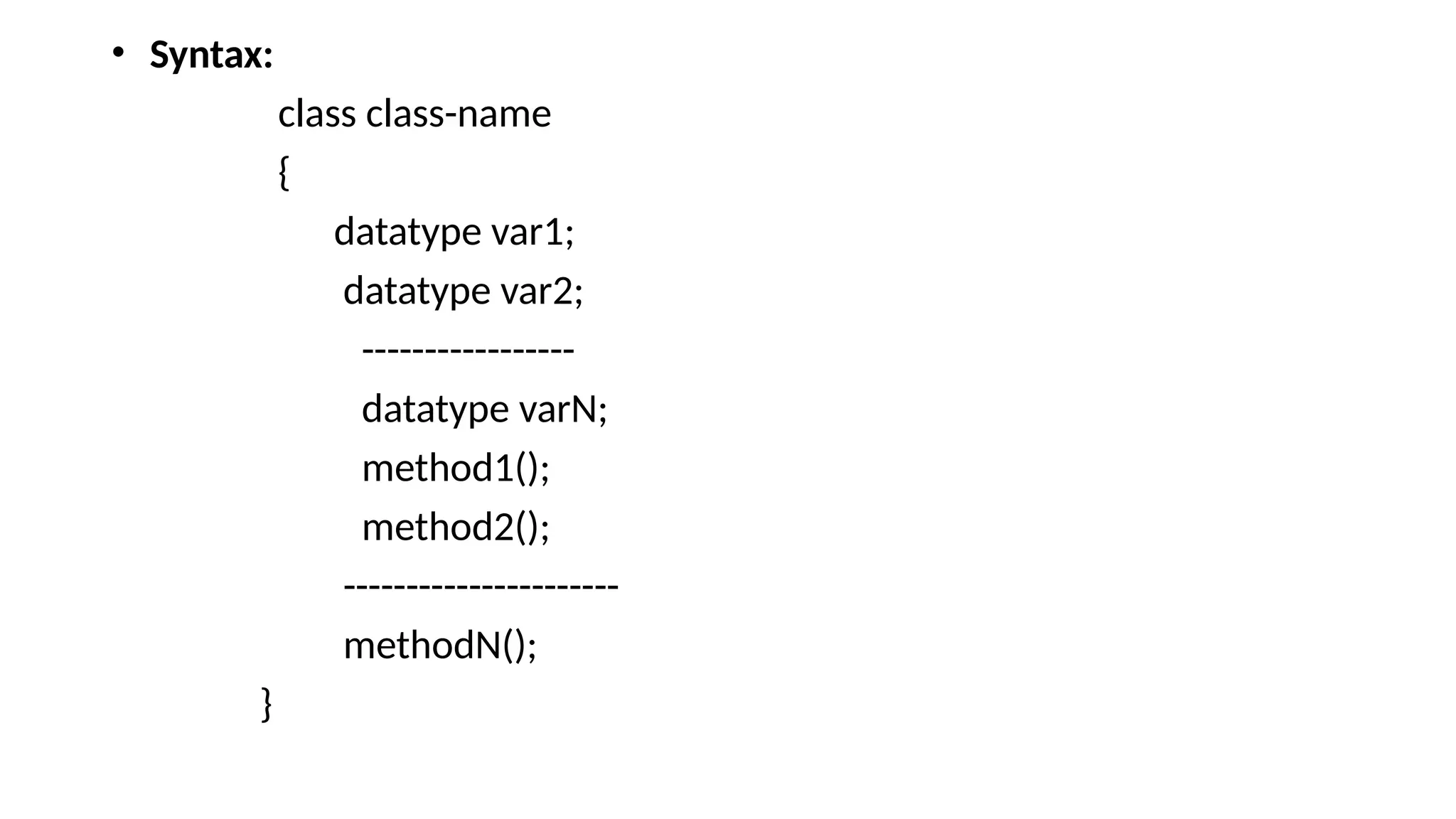
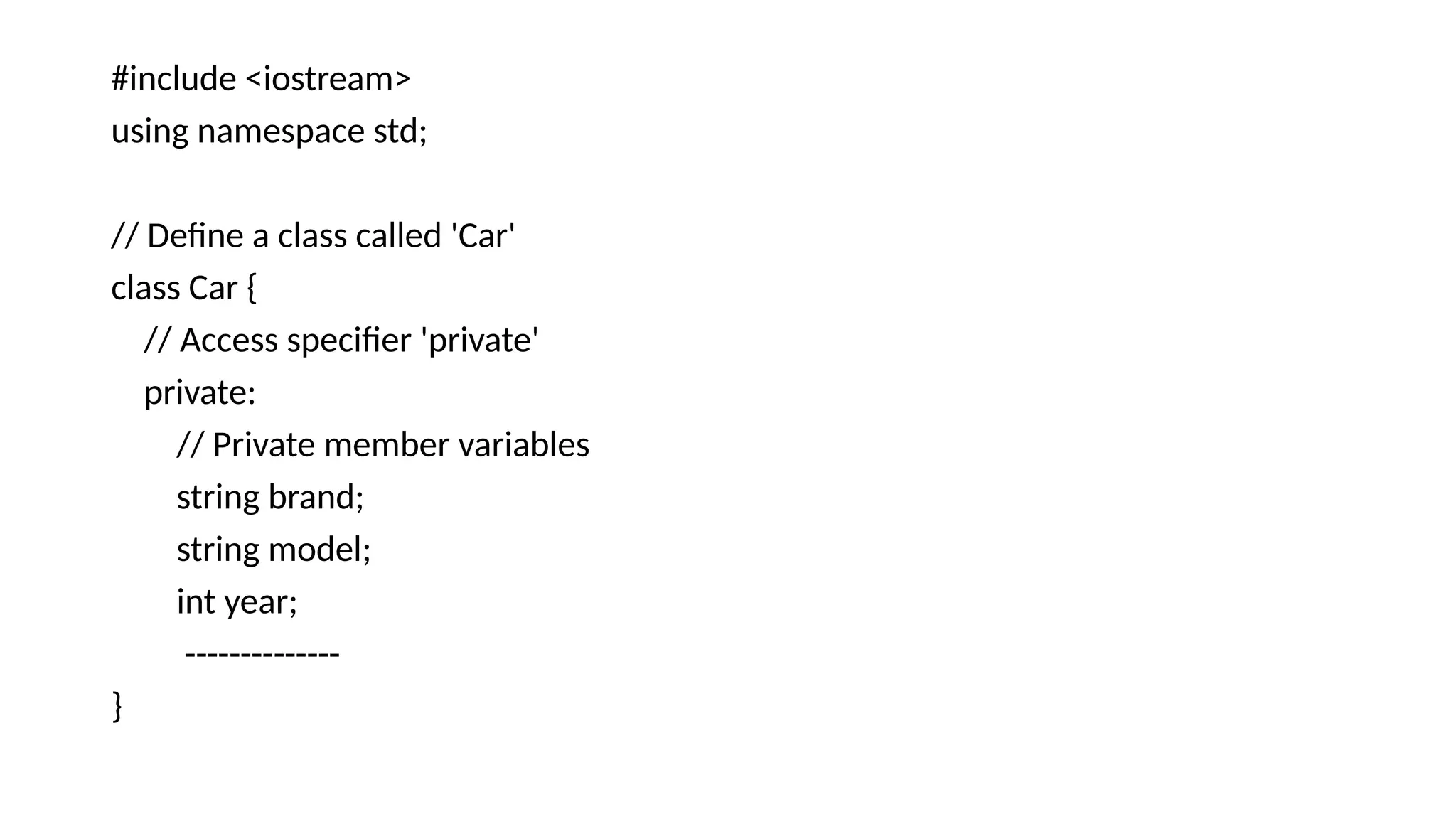
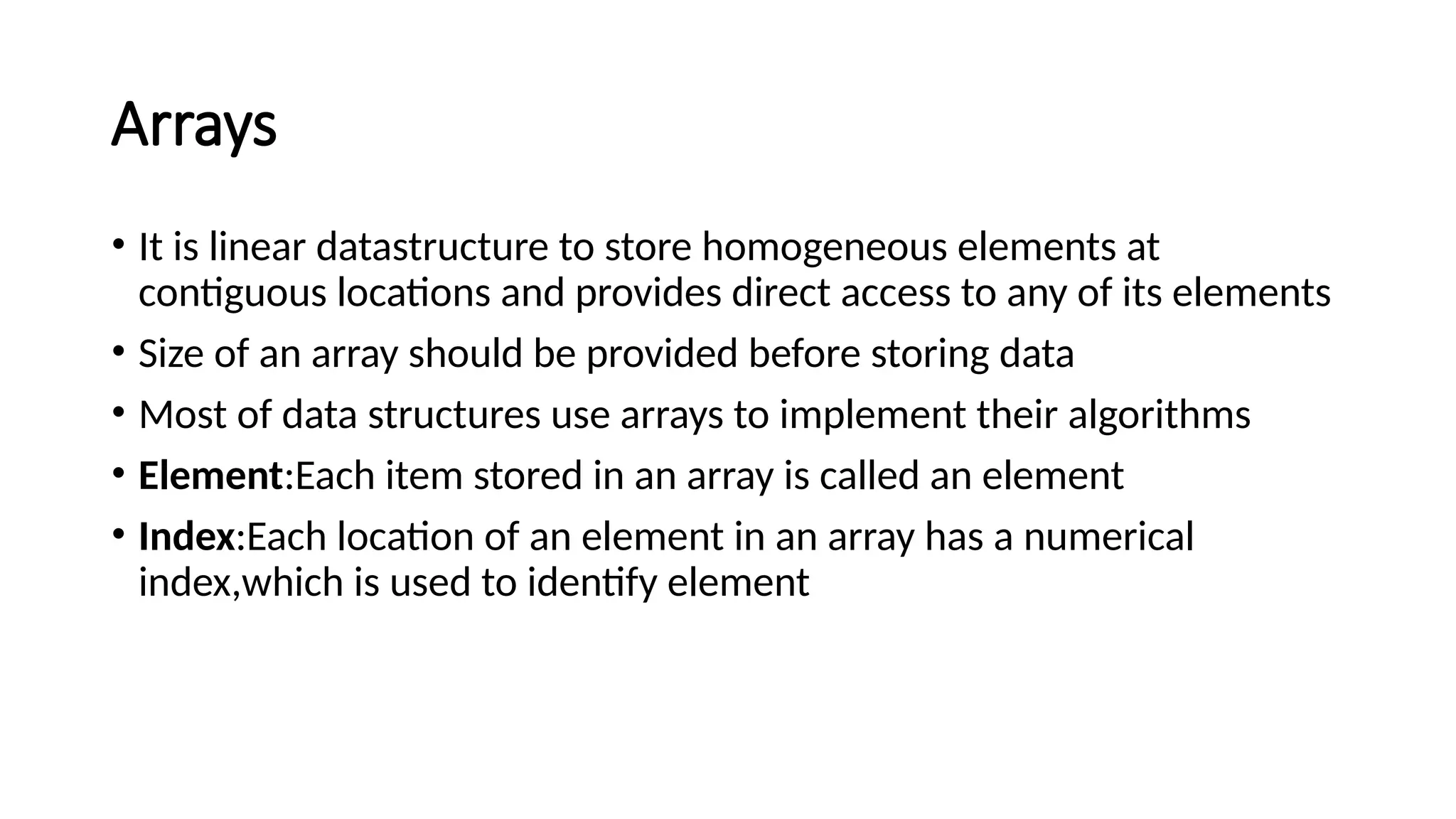
![Syntax: datatype Arrayname[sizeofArray]; Example: int scores[10]={79,80,81,87,90,74,85,65,76,82}; Refer program](https://image.slidesharecdn.com/unit-i-250105130536-4738c228/75/Introduction-to-datastructures-presentation-25-2048.jpg)
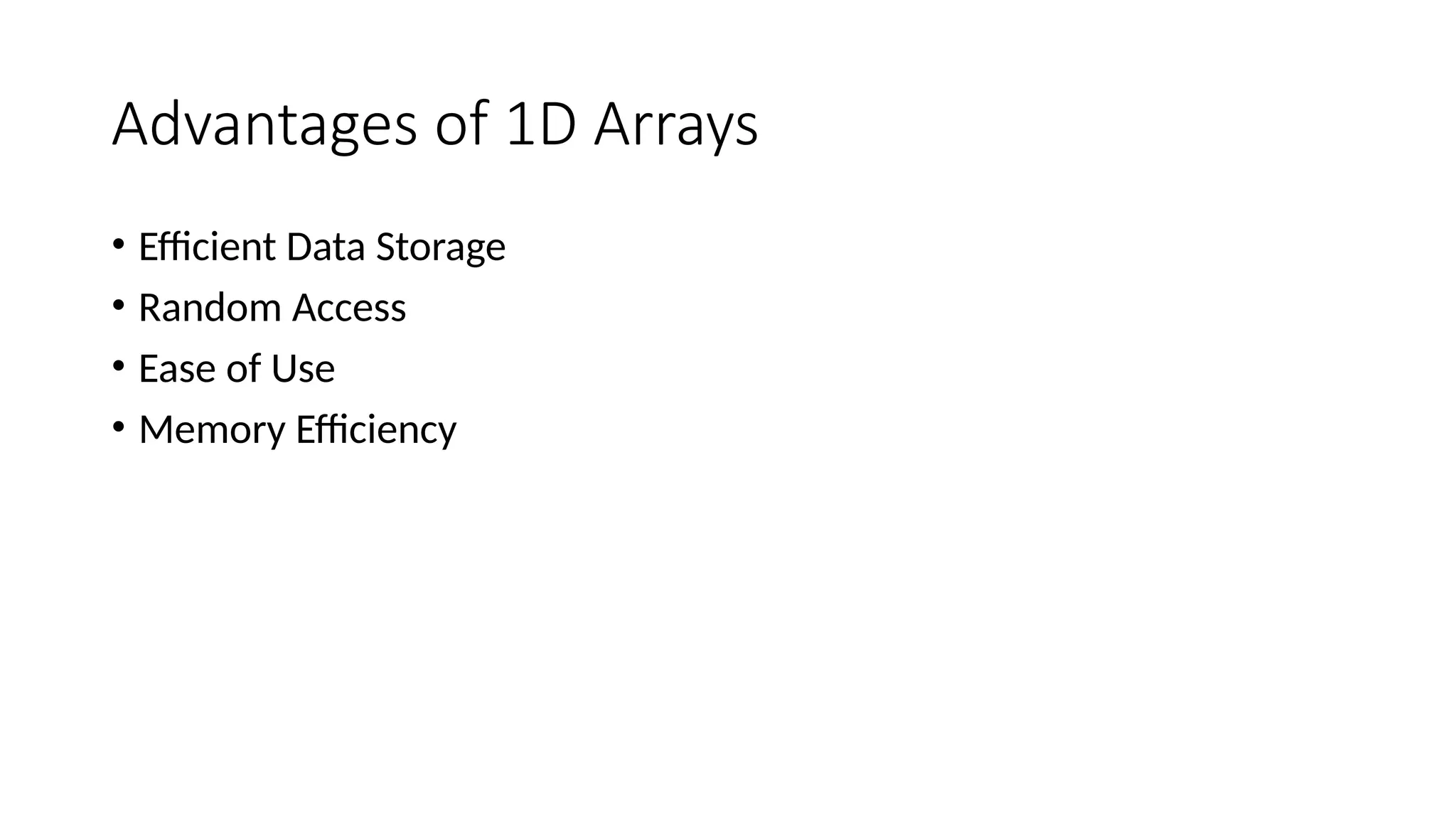
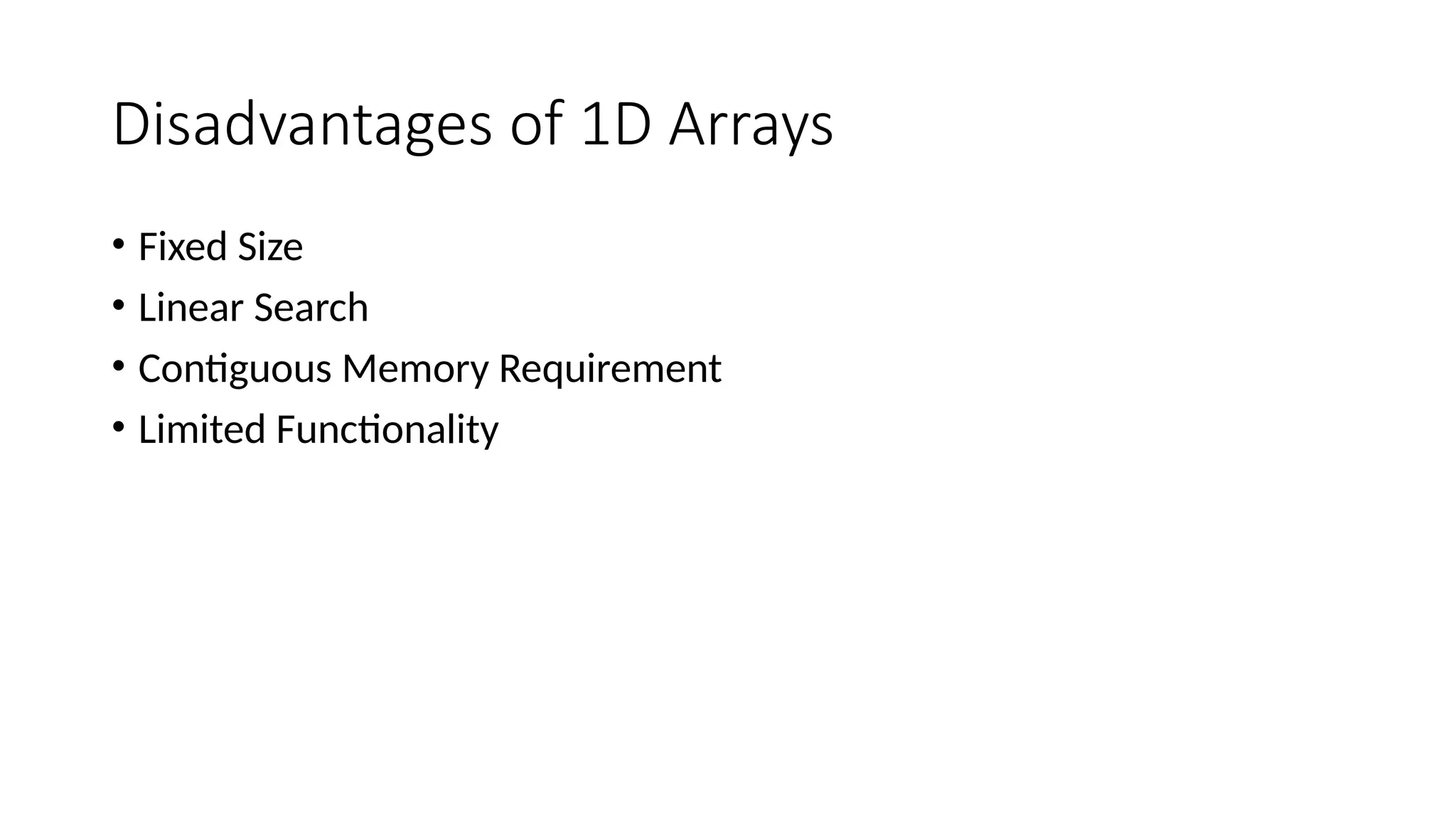
![2-D Arrays and N-D Arrays • A two-dimensional array is a list of one-dimensional arrays • A multi-dimensional array is an array of arrays • 2-D are mostly used to store data in tabular manner Syntax: data_type array_name[rows][columns];](https://image.slidesharecdn.com/unit-i-250105130536-4738c228/75/Introduction-to-datastructures-presentation-28-2048.jpg)
![Example: int matrix[3][4] = { {1, 2, 3, 4}, // Row 0 {5, 6, 7, 8}, // Row 1 {9, 10, 11, 12} // Row 2 }; If you initialize only some elements of the array, the remaining elements will be initialized to zero Refer program](https://image.slidesharecdn.com/unit-i-250105130536-4738c228/75/Introduction-to-datastructures-presentation-29-2048.jpg)
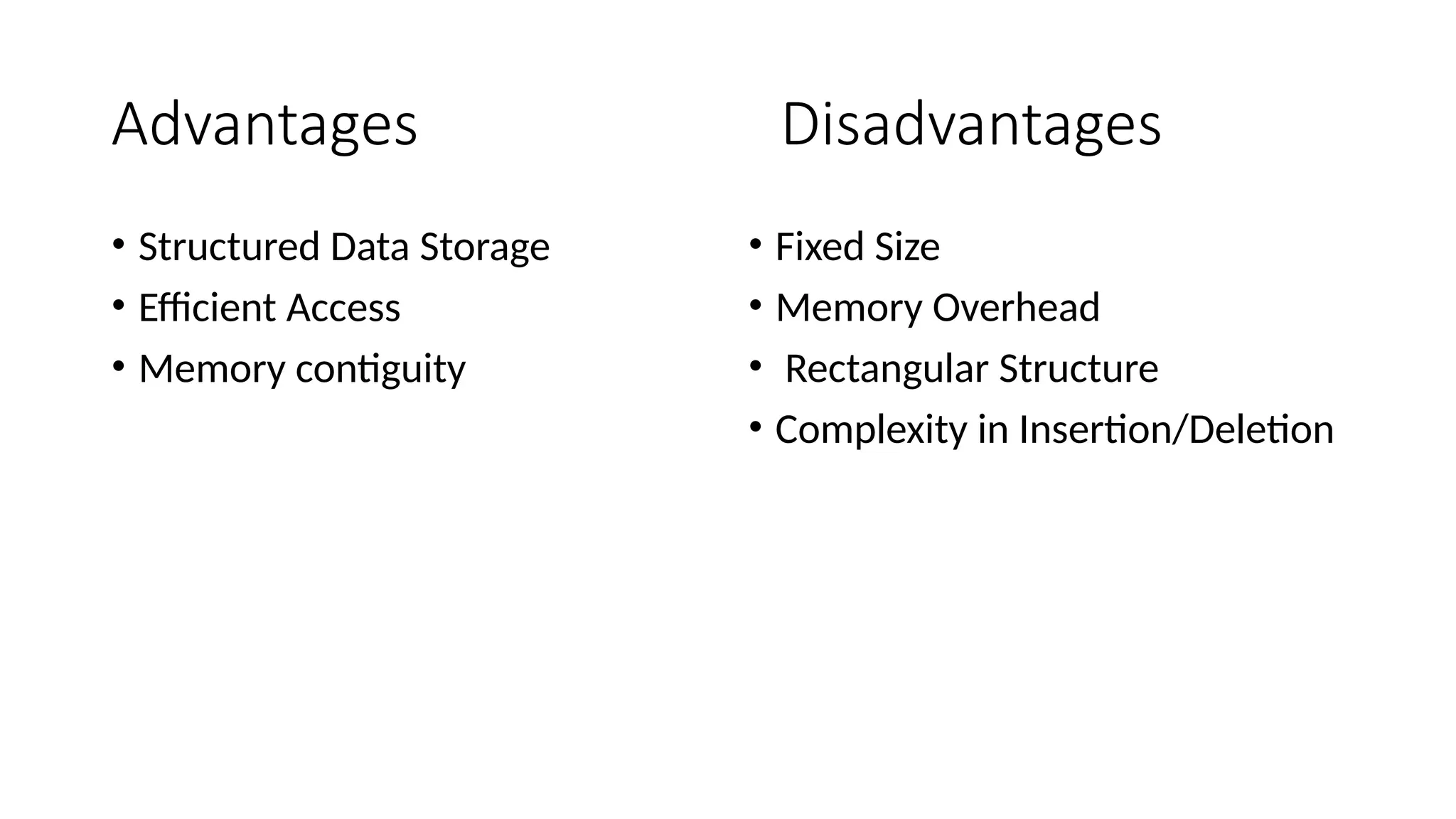
![N-dimensional arrays: • In C++, you can declare arrays with more than two dimensions, commonly referred to as N-dimensional arrays. • The syntax for declaring an N-dimensional array is an extension of the syntax for 2-D arrays. • Syntax: data_type array_name[dim1_size][dim2_size]...[dimN_size]; Total number of elements=No.of rows*No.of columns](https://image.slidesharecdn.com/unit-i-250105130536-4738c228/75/Introduction-to-datastructures-presentation-31-2048.jpg)
